Samsung QN85D is the entry-level model in the Neo QLED series for 2024, but it certainly doesn’t come across as a "budget" option. It’s a television that combines modern technology with convenient smart features. During tests, the Tizen system operated smoothly, and integration with the SmartThings ecosystem made it easy to connect other devices in the home. If we use Apple devices, AirPlay works flawlessly, which is convenient, especially for viewing photos or videos from our phone. As for its performance during daily use, it simply works very well. The television handles viewing even in bright rooms – its brightness is sufficient that there’s no need to cover the windows. Additionally, the stable central stand not only looks good but also adds confidence that the device is standing securely and will definitely fit on smaller furniture. There is a lack of recording function, but the solar remote control, which operates decoders (e.g. Canal+) and the PiP function are practical additions that anyone who enjoys spending time watching regular television will appreciate. As for the picture – because that’s the most important thing in a TV – the QN85D makes a great impression. The VA panel provides very good blacks – especially if we watch the television head-on. Thanks to miniLED backlighting, the television better controls the light, resulting in much more detail visible in dark scenes. When it comes to motion fluidity, the television performs excellently thanks to the 120 Hz refresh rate – both games and matches are enjoyable to watch. If we’re gaming, low input lag combined with an excellent motion smoother and game bar will be a significant advantage – gameplay will be a pleasure. Samsung QN85D is a versatile television that will perform well for both everyday television watching and more demanding sessions or gaming on a console. Although it lacks some features, such as recording, its picture quality, motion fluidity, and smart capabilities definitely make up for these shortcomings. If we’re looking for a modern yet affordable Mini LED model, QN85D will be a very good choice.
- Matching (Score)
- Our verdict
- TV appearance
- Where to buy
- Contrast and black detail
- HDR effect quality
- Factory color reproduction
- Color reproduction after calibration
- Smoothness of tonal transitions
- Image scaling and smoothness of tonal transitions
- Blur and motion smoothness
- Console compatibility and gaming features
- Input lag
- Compatibility with PC
- Viewing angles
- TV efficiency during daytime
- Details about the matrix
- TV features
- Apps
- Playing files from USB
- Sound
Samsung Neo QLED QN85D / QNX1D vs Hisense E7Q / E79Q
Direct compare
Neo QLED / QN85D / QNX1D
E7Q / E79Q

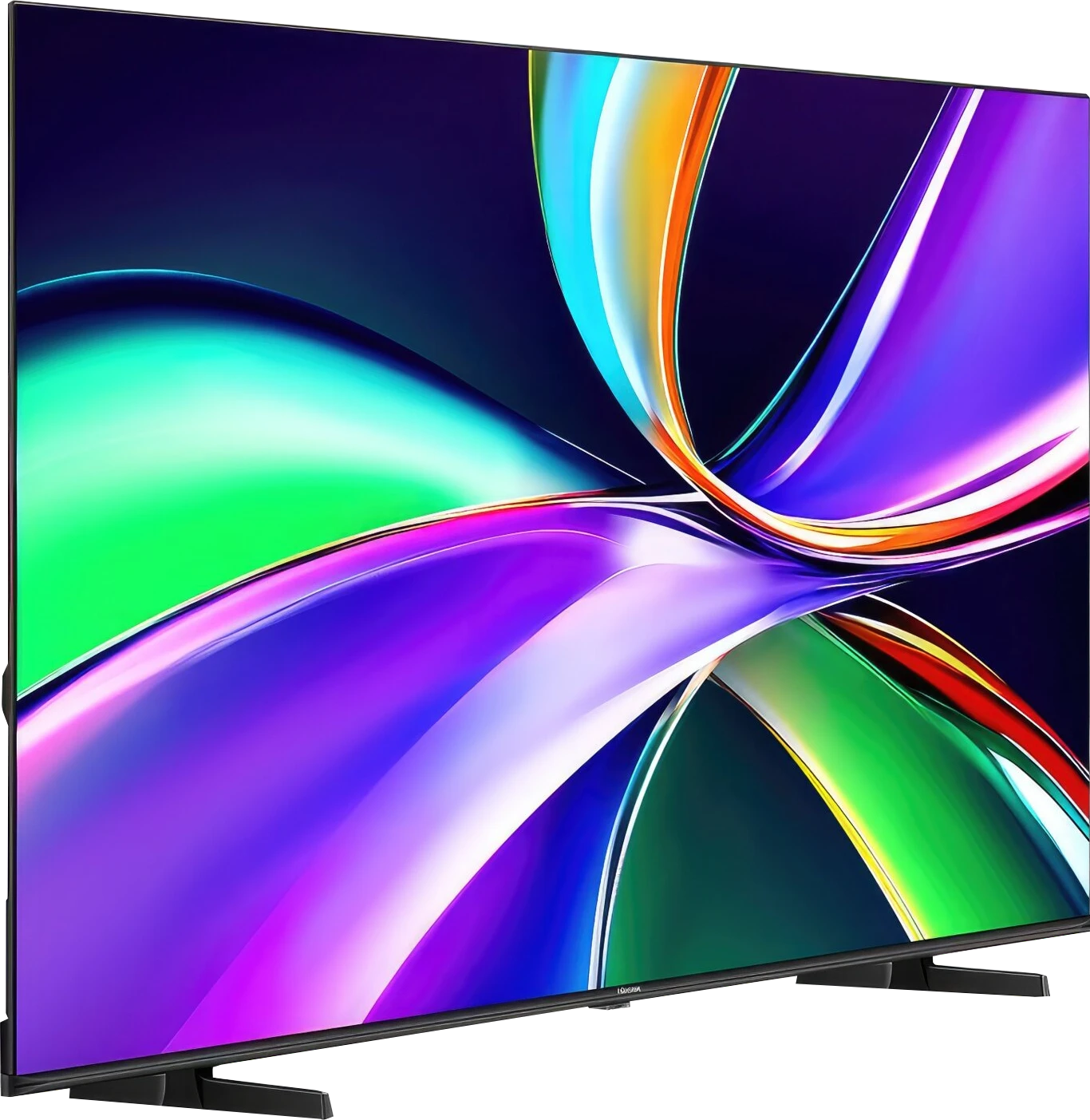
Panel type: LCD VA
Resolution: 3840x2160
System: Tizen
Model year: 2024
Complete the survey to find out the result

Panel type: LCD VA
Resolution: 3840x2160
System: VIDAA
Model year: 2025
Complete the survey to find out the result

Overall rating
7.4
6.1
Movies and series in UHD quality
6.7
6.2
Classic TV, YouTube
6.8
5.9
Sports broadcasts (TV and apps)
6.7
5.1
Gaming on console
8.9
7.1
TV as a computer monitor
7.6
3.0
Watching in bright light
7.3
5.2
Utility functions
7.4
8.7
Apps
8.7
7.7
Sound quality
7.0
6.3
Complete the survey to find out what fits your preferences
Advantages
Nice contrast - Miniled backlighting
Very good for gamers - 120Hz, 4xHDMI 2.1, low input lag
Tizen operating system with SmartThings and AirPlay support – wide integration and flexibility
Very high brightness 825 cd/m² – good performance in bright rooms
Pleasant sound with noticeable bass
Good black and contrast
QLED (PFS LED) – vivid and saturated colours, DCI-P3 coverage of approx. 92%
Many features for gamers: ALLM, VRR, low input lag, Game Bar
Supports 120Hz at 1080p!
VIDAA system – easy to use, with AirPlay, Screen Mirroring and voice search
USB recording from built-in tuners
3.5 mm jack output and component inputs for older devices
Supports multiple audio formats including Dolby Atmos and DTS:X
Attractive price
Disadvantages
No recording feature
Limited support for multimedia formats, no DTS audio format
Dolby Vision adds little (which is a shame)
Poor digital image processing: lack of image enhancement features, average upscaling
Strong dithering when connected to PC (colourful fonts)
The build quality of our unit was very average
Our verdict
Hisense E7Q / E79Q is a type of television that doesn’t promise miracles – and maybe that's why it can pleasantly surprise. It doesn’t try to pretend to be high-end equipment; it just gets the job done. If you’re looking for a cheap screen for everything that can handle Netflix, consoles, and morning YouTube while enjoying your coffee, this model makes a lot of sense. The VIDAA system has matured over the past few years, and it’s clear the manufacturer is learning. We have AirPlay, screen mirroring, and voice search in Polish – everything works, maybe not at lightning speed, but smoothly enough not to be annoying. You won’t find thousands of apps like in Google TV, but the most important ones are at hand. It’s a system that's meant to be simple and practical, not overloaded with unnecessary gimmicks – and in that sense, it really holds up. There’s something interesting for gamers too. The E7Q / E79Q offers low input lag, automatic low latency mode (ALLM), VRR support up to 60 Hz, and even a 120 Hz mode at 1080p resolution. It’s not a screen for hardcore e-sports enthusiasts, but if you just like to fire up your console in the evening and play a few rounds, this TV will do its job without complaining. And what about picture quality? We won’t deceive you – it’s not spectacular, but there’s also no reason to complain. A brightness of around 350 nits won’t impress, but the contrast thanks to the VA panel can really surprise positively. The blacks are quite deep, and the colours have a pleasant intensity, especially in SDR mode. It’s a bit of a shame that Dolby Vision doesn’t add much – because if it worked as it should, we’d have a TV that could confidently be recommended for HDR viewing as well. On the other hand, it’s hard to expect that in this price range. It’s simply a fair, well-priced screen that doesn’t make a fuss about itself but can deliver solid picture quality and surprisingly good features. And while it’s not perfect, after a few days of use, it’s hard not to think, “gee, this cheap Hisense really holds its own.”
TV appearance





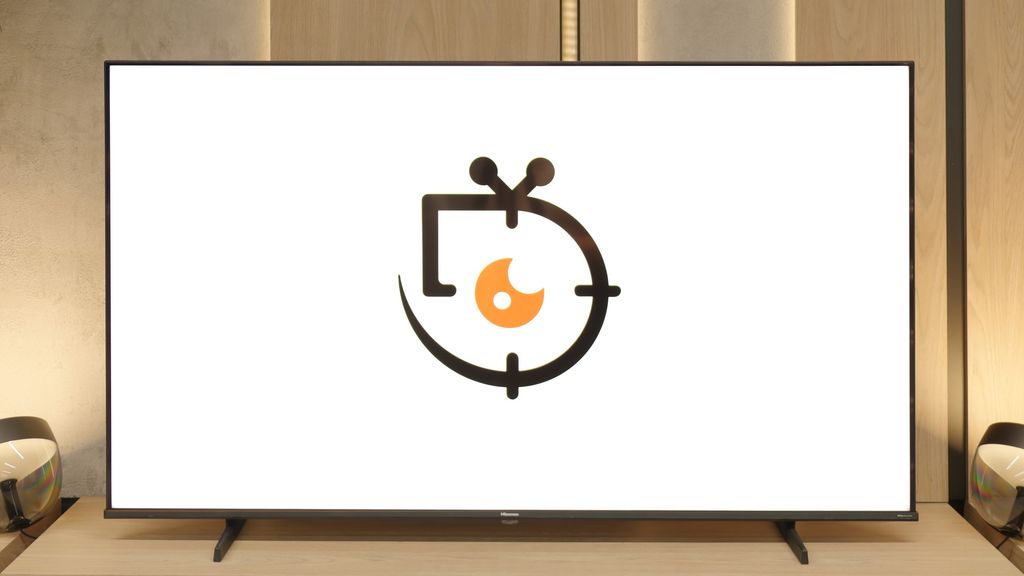
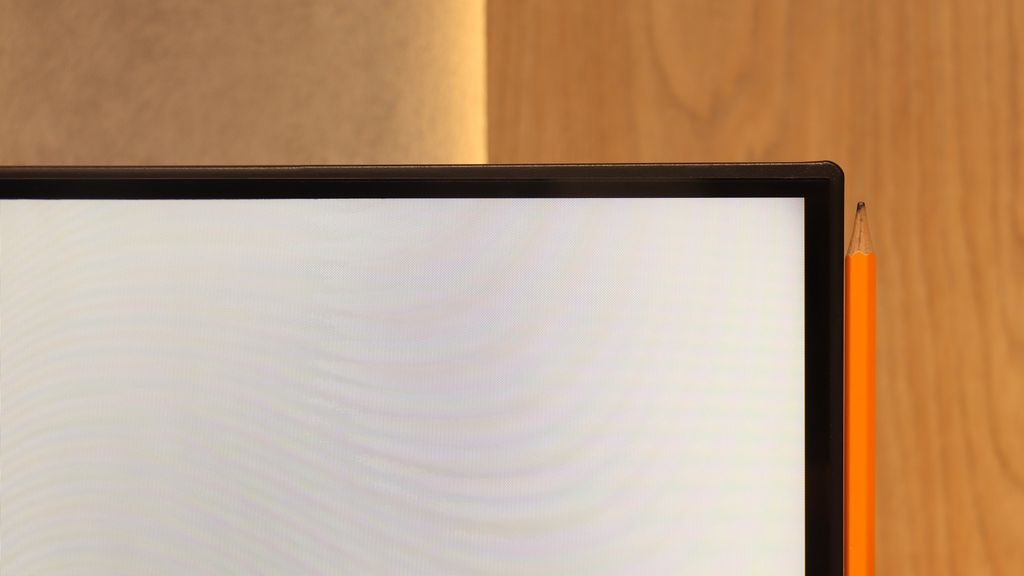
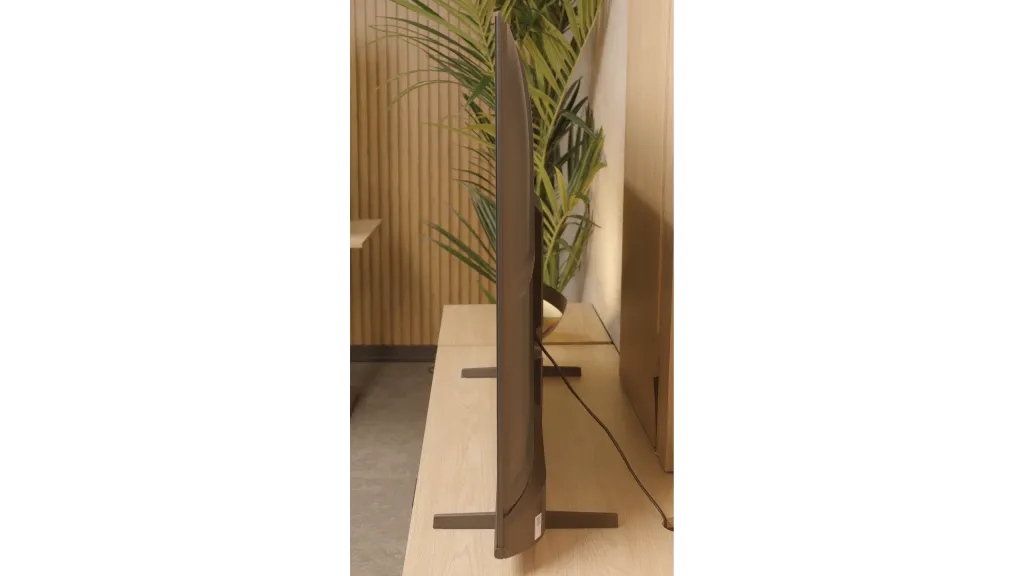
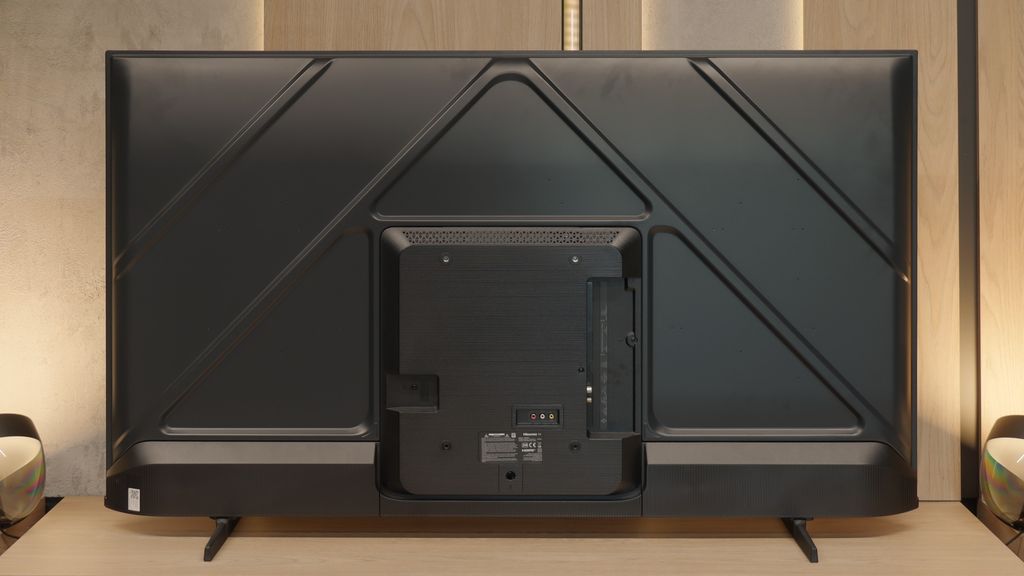
Contrast and black detail
7.6/10
5.7/10
Local dimming function: Yes, number of zones: 120 (12 x 10)
Local dimming function: No
Contrast:

Result
107,750:1

Result
27,100:1

Result
62,500:1

Result
8,750:1

Result
4,950:1

Result
5,400:1

Result
5,450:1

Result
3,800:1

Result
5,000:1

Result
4,350:1
Halo effect and black detail visibility:

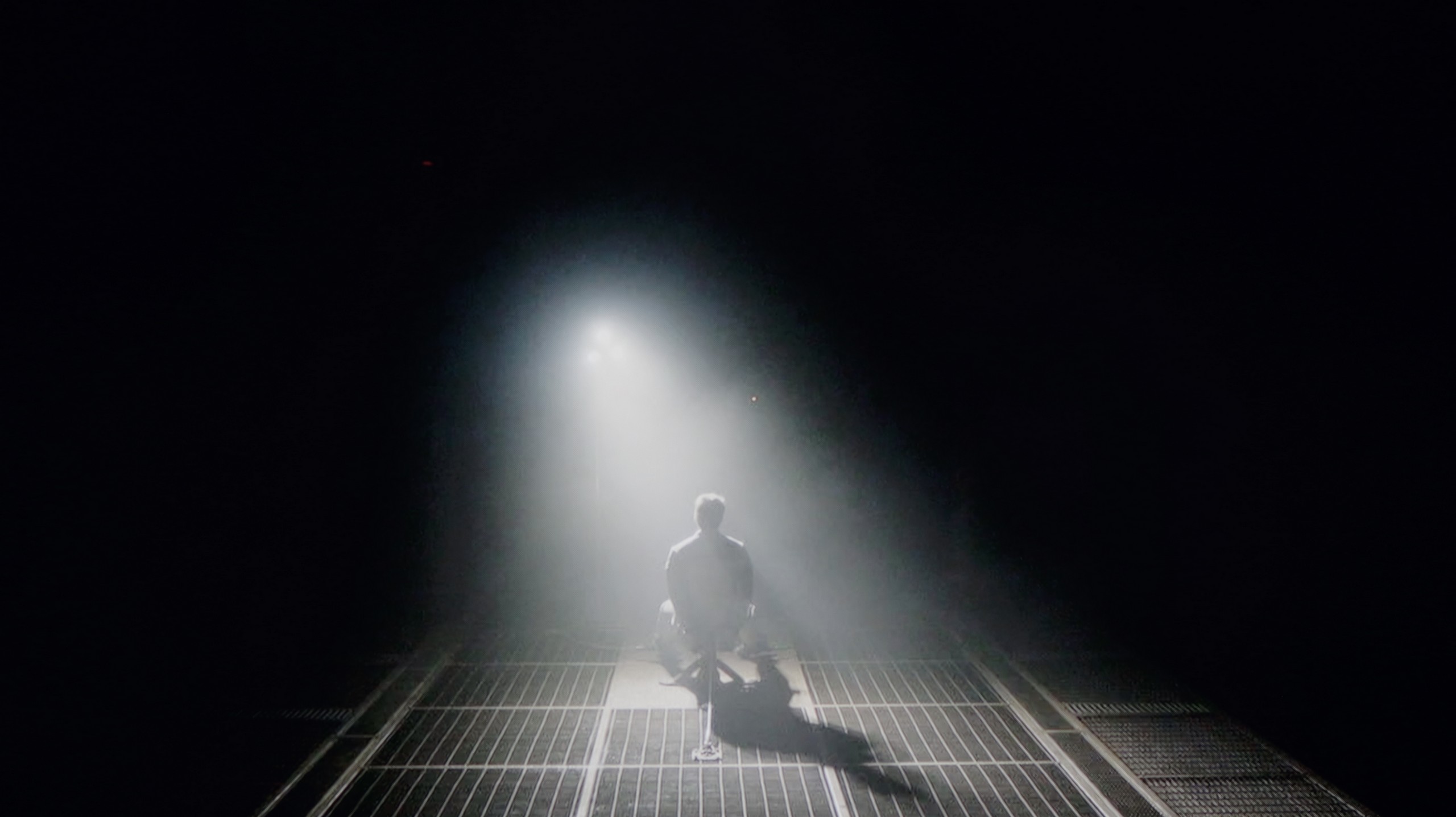
Samsung QN85D for 2024 is the first model from the NeoQLED series to use a VA panel, offering significantly better blacks than IPS/ADS technologies. The 55-inch version has 160 dimming zones, which may not be an impressive number compared to competing models from China. In larger sizes, the number of zones is greater, which naturally translates to better contrast. The contrast results are good, but certain limitations are evident.
With smaller elements on the screen, the limited number of zones causes issues – the TV either tries to maintain a high brightness level, resulting in a halo effect around objects, or it dims too much, as observed in the test scene from the Pioneer disc. Additionally, in the same scene where the TV showcased its highest capabilities (Oblivion) in contrast, it also has significant problems with light separation. You can see how the TV struggles to maintain the best black at the cost of detail in the whites. You can't have it all. Both of these effects impact the perception of contrast, making the performance weaker in more challenging conditions. However, compared to TVs without local dimming technology, the results are very positive and can be surprising.
Hisense E7Q / E79Q in our test variant of 58 inches is equipped with a VA panel, which has a huge impact on the reception of contrast and black levels in films or series. Thanks to such a panel, you can expect decent contrast and a stable visual effect, which works really well in most scenes. In measurements, we obtained values reaching around 6000:1, which in this price range is considered a solid result. However, it’s important to remember that this is not a design with local dimming, so don’t expect deep, “pitch-black” blacks known from more expensive models. In some shots, the black may have a slightly blue hue, which is completely natural for this technology and price. This is, however, a compromise that doesn’t bother during everyday viewing – especially if we watch in the evening with slightly dimmed light.
HDR effect quality
5.6/10
5.1/10
Luminance measurements in HDR:

Result
999 nit

Result
335 nit

Result
562 nit

Result
182 nit

Result
855 nit

Result
300 nit

Result
329 nit

Result
379 nit

Result
389 nit

Result
397 nit
Scene from the movie “Pan” (about 2800 nits)


Scene from the movie “Billy Lynn” (about 1100 nits)


Static HDR10


Dynamic: HDR10+
Dynamic: Dolby Vision


HDR luminance chart:
Hisense E7Q / E79Q
HDR luminance
Samsung Neo QLED QN85D / QNX1D
HDR luminance
Samsung QN85D leaves us with mixed feelings regarding HDR quality. It can shine in synthetic luminance tests, reaching even 1000 nits – which makes scenes like those from 'The Meg' or the start of 'Life of Pi', where the screen is all bright, look truly impressive. However, in practice, the device has its limitations – especially when smaller bright elements appear on the screen. In such moments, brightness noticeably drops, and the HDR effect loses its punch. At brightness levels around 200-300 nits, the magic of HDR simply fades away, not delivering spectacular effects. However, it’s not that the television completely disappoints – coverage of the DCI-P3 colour gamut at 95% is quite decent, although it doesn’t stand out against the best competitors. Colours are well-rendered, but it's clear that HDR could make a bigger impression if brightness could be better controlled.
Hisense E7Q / E79Q is a mid-brightness TV, with a peak luminance level of around 350-380 nits. This is the absolute minimum that allows viewing HDR content in a way that's close to the creators' intentions, though without a distinct "wow" effect. The results of synthetic tests on white test patterns were confirmed in practice – in movie scenes, the bright parts of the image are stable and fairly even, but it's hard to talk about a true "burst of light" here. In everyday use, such as when watching Netflix or YouTube, the HDR effect is acceptable and is more than sufficient for most users. However, it must be said clearly – this is not the level of top-end screens, and one shouldn't expect that at this price. Fortunately, the Hisense E7Q / E79Q has an advantage that allows it to score quite a few points: it's a QLED panel of the PFS LED type, using an additional phosphor layer that improves colour reproduction. The measured range of the DCI-P3 colour gamut is around 92%, which means that the colours in most scenes are vibrant, well-saturated, and pleasing to the eye, especially for this price bracket.
Factory color reproduction
6.3/10
5.2/10


Factory Mode
After calibration
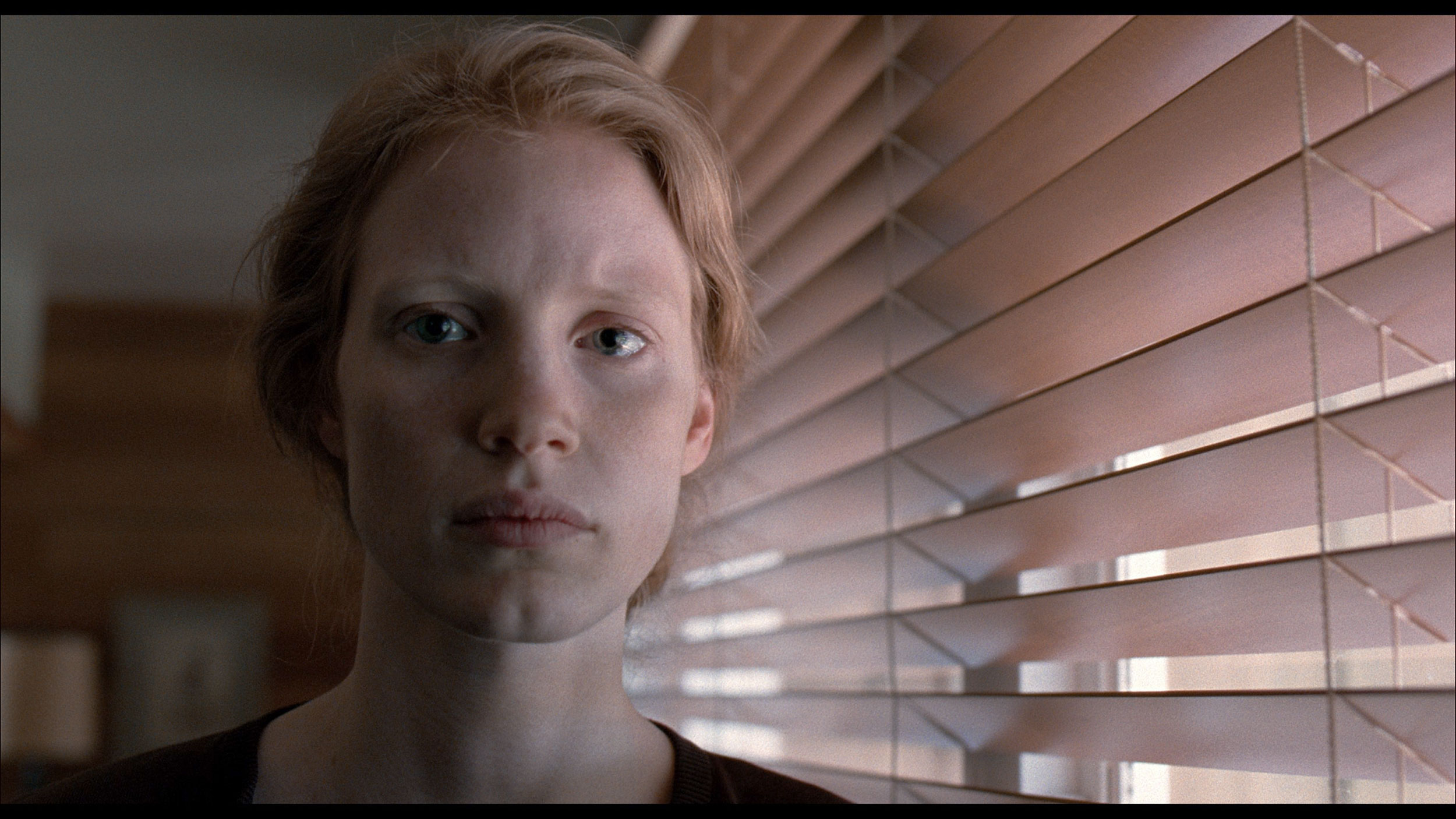
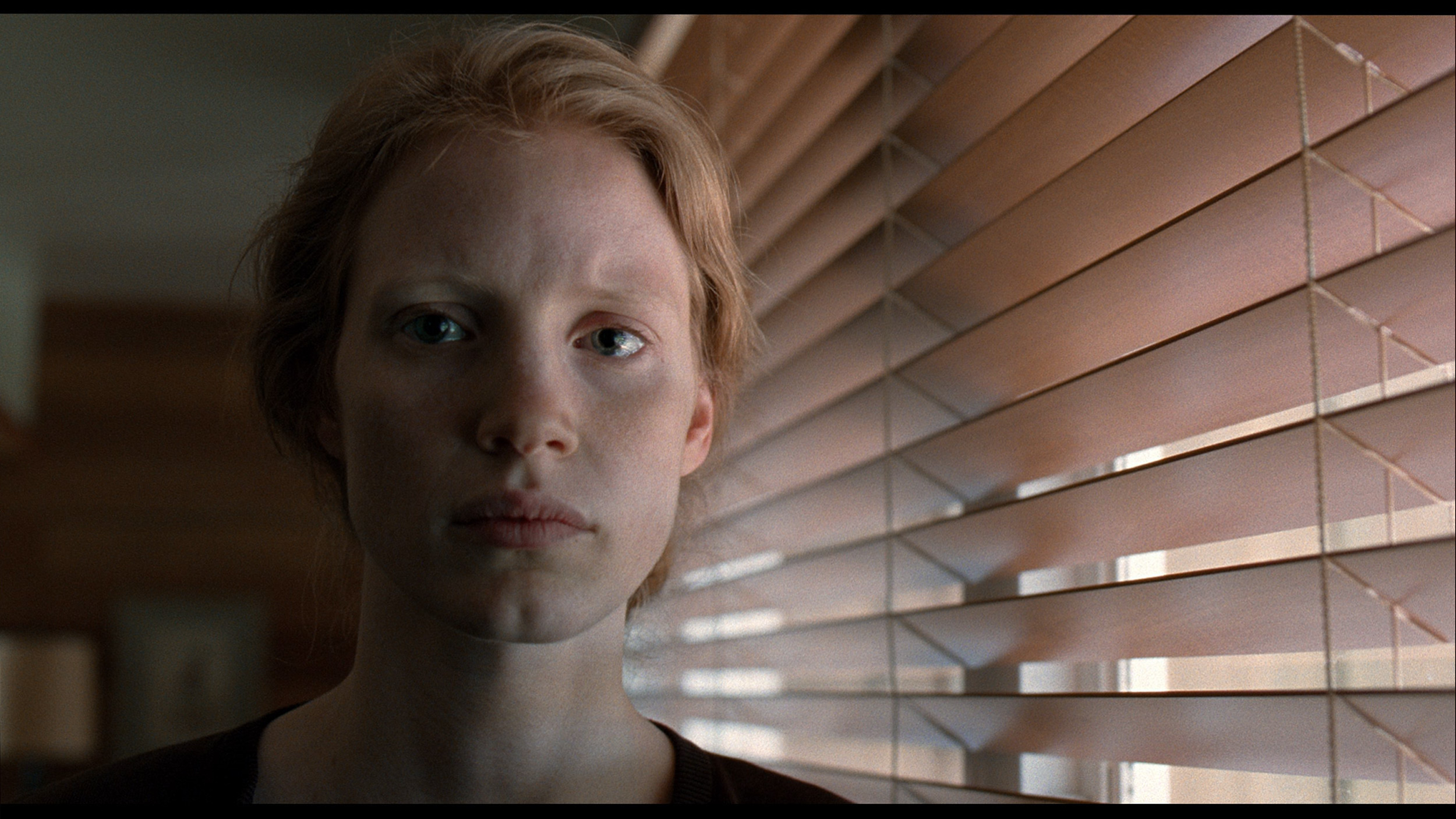
Factory Mode
After calibration
Samsung QN85D TV has been tested in the best available mode – Filmmaker. While one might expect its name suggests a mode perfectly suited for films, unfortunately, it has several significant issues.
When it comes to white balance for HD content, there is a noticeable dominance of red and blue, which makes the entire image take on pinkish hues – this is also confirmed by Colour Checker tests. This effect disturbs the naturalness of skin tones and many other elements, which is particularly evident in more demanding scenes. Initially, the white balance for 4K HDR content seems correct, but at the end of the graph, there is a significant spike in blue hues, affecting the final image quality and making the colours appear unnatural.
The gamma brightness characteristic is also not ideal – although it generally stays close to the reference value, there is a slight drop below 2.4, which can impact the perceived depth of shadows. The EOTF curve responsible for 4K content does not perform any better. There is a clear boost compared to the reference curve, leading to excessive brightness in some areas, thus losing the cinematic quality that the Filmmaker mode should provide. While it might initially seem that the effect is cinematic, unfortunately, the number of errors in colour and brightness reproduction is too significant to call it flawless.
In Filmmaker mode, the Hisense E7Q / E79Q television really managed to impress. After the first measurements, it turned out that the white balance was quite well tuned, with the only minor deviation being a slight tendency towards a purple hue, which we mentioned earlier. However, this did not significantly impact the overall character of the image – it remained cohesive and pleasant to view. A much bigger issue was the brightness characteristics (gamma) in SDR content and the EOTF curve in HDR films. The television clearly brightened the image, flattening contrast and taking away depth. Gamma values could drop from the reference 2.4 down to around 1.9, making the image look as though it was covered with a thin, milky layer. Fortunately, this is a problem that can be relatively easily corrected through calibration.
Color reproduction after calibration
7.9/10
7.4/10




After professional calibration of the Filmmaker mode on the Samsung QN85D television, a significant improvement is noticeable, especially for HD/SDR content. The white balance has been completely free of major errors, and the brightness characteristics for this type of content have been significantly adjusted, allowing for a more natural and realistic image. Television, YouTube films, and other HD materials now look much better, with appropriately balanced colours and without the exaggerated hues that previously marred the experience.
However, the biggest issues arise with 4K HDR content. Despite the calibration, it's hard to speak of significant improvement in white balance here – the differences are cosmetic rather than essential. Brightness, governed by the EOTF curve, seems to be set according to the reference level in synthetic tests at first glance, but has its limitations during actual viewing in films. When analysing the EOTF curve in real film scenes, it becomes clear that the television struggles to maintain consistency in brightness. The effect is that mixed scenes still have their darkest elements boosted, leading to exaggerated contrasts, and completely dark scenes remain too dark, which negatively affects the visibility of details.
The biggest beneficiary of calibration in the case of the Hisense E7Q / E79Q was undoubtedly the SDR mode. It managed to achieve almost perfect image quality – most of the errors in the Color Checker test dropped below a value of 3, and often even 2, which is a remarkable result for this class of equipment. The biggest improvement came from aligning the brightness characteristic (gamma), which made the image no longer look blown out and regained natural depth. In HDR content, it was also possible to improve the colours and eliminate the purple tint that we mentioned earlier, but errors in the Color Checker measurements were still noticeable. This is due to the fact that – as is often the case with Hisense televisions – the screen manipulates brightness quite strongly, overexposing some colours. This was also indicated by the EOTF curve, which was slightly above the reference values, suggesting these minor issues with excessive brightening. Despite this flaw and the construction limitations that arise with HDR content, the Hisense E7Q / E79Q gained quite a bit after calibration. In everyday use, the television presents a coherent, natural, and pleasant-to-the-eye image, and the difference compared to the factory settings is indeed huge.
Smoothness of tonal transitions
7.6/10
8.5/10





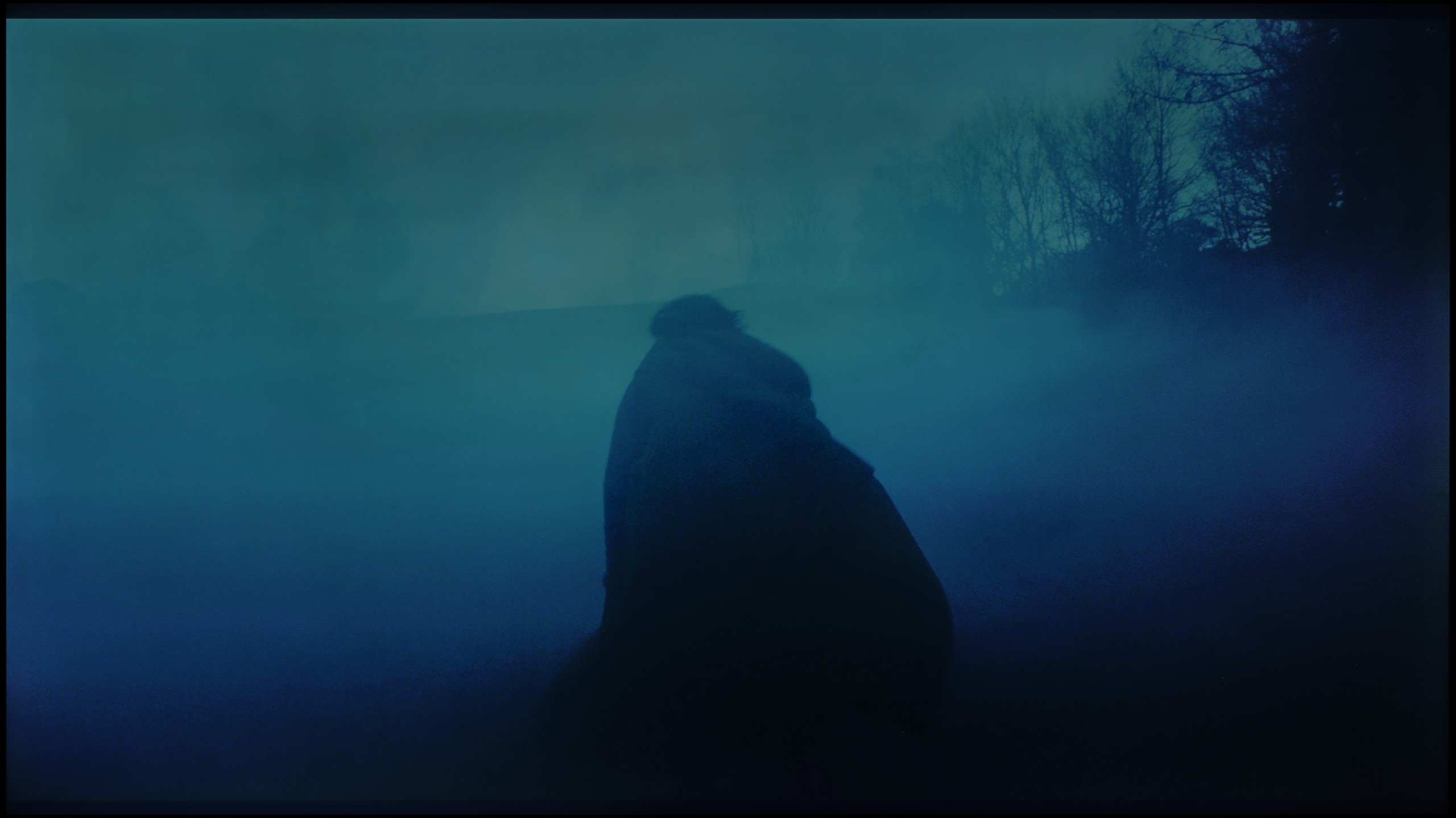






When it comes to tonal transition fluidity on the Samsung QN85D television, it’s generally very good. The tonal transitions are smooth, and there are no significant artifacts. However, more demanding users may notice some issues in certain scenes. For example, when blending darker colours, like in the scene with the red sea, subtle shortcomings can be observed. Similarly, in the case of lighter colours – the scene from the film 'The Martian' shows slight gradation issues, leading to subtle but noticeable transitions between shades. Despite these minor shortcomings, most users should be satisfied. The results are of a high standard and in most cases provide smooth, natural transitions between colours.
For a budget TV, the Hisense E7Q / E79Q performs really well with a challenging element like the smoothness of tonal transitions. In most scenes, the colours blend together naturally, without noticeable jumps or artificial edges. The brighter parts of the image stand out particularly well – the transitions are smooth and pleasant to the eye. Minor issues arise only with very dark shades of grey, where you can notice slight banding. However, this is a detail that doesn’t affect the overall perception of the image. For a TV in this price range, the result is more than decent.
Image scaling and smoothness of tonal transitions
7/10
5/10
Smooth transition function

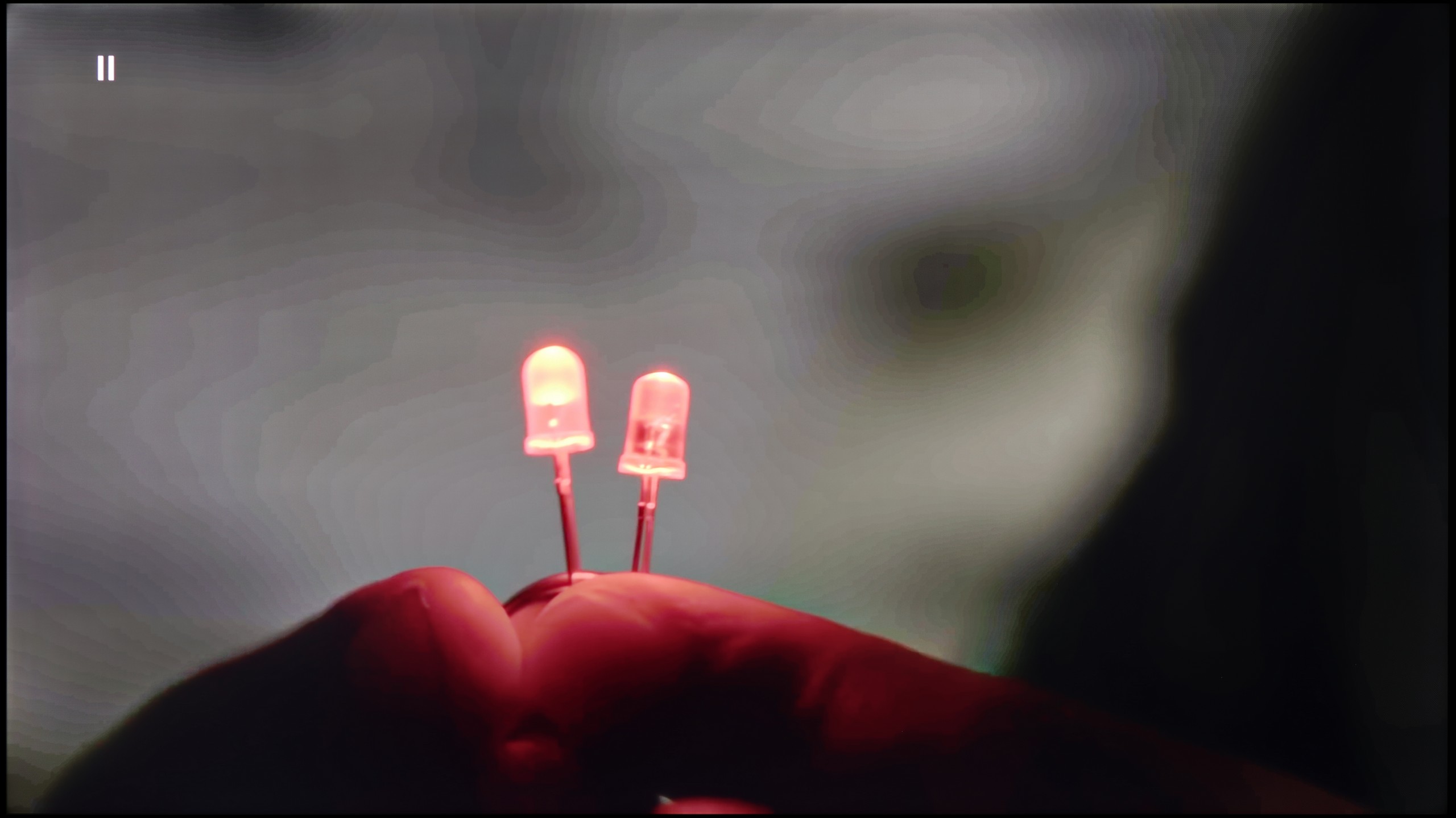
Image without overscan on the SD signal


When checking the fluidity of tonal transitions in low-resolution materials on the Samsung QN85D television, it’s worth noting the noise reduction feature, which significantly improves problematic tonal transitions. On the other hand, this feature also has its downsides – it removes film grain, which is an important element of many productions, giving them authenticity, and it can also soften the image. This may appeal to those who prefer a smoother picture; however, for lovers of the authentic look of films, using this feature should be considered carefully.
Regarding image scaling, the television performs very well. The model's figure is presented correctly, without noticeable distortions, and the branches in the background do not have excessive artificial sharpness, which is often a problem when scaling lower resolution materials. The high capabilities of the image processor are evident here, which can effectively process lower quality materials, ensuring good final quality.
In the case of Hisense E7Q / E79Q, upscaling and digital image processing are not the strongest points of this television. It is evident that the manufacturer has opted for simplicity rather than advanced image processing algorithms. The television does not offer any features that smooth tonal transitions or systems that enhance image clarity, which makes lower resolution materials look quite raw. Subtle compression edges can be seen on the screen, which better processors in other models can effectively hide.
During the testing of HD materials, we noticed that the E7Q tries to artificially boost detail, which sometimes works and other times has the opposite effect – the image becomes soft, slightly blurred, and at times even "watery." There is no aggressive sharpening that ruins naturalness, but there is also a lack of finesse in detail integration that better image processors provide.
Blur and motion smoothness
7.5/10
4.8/10

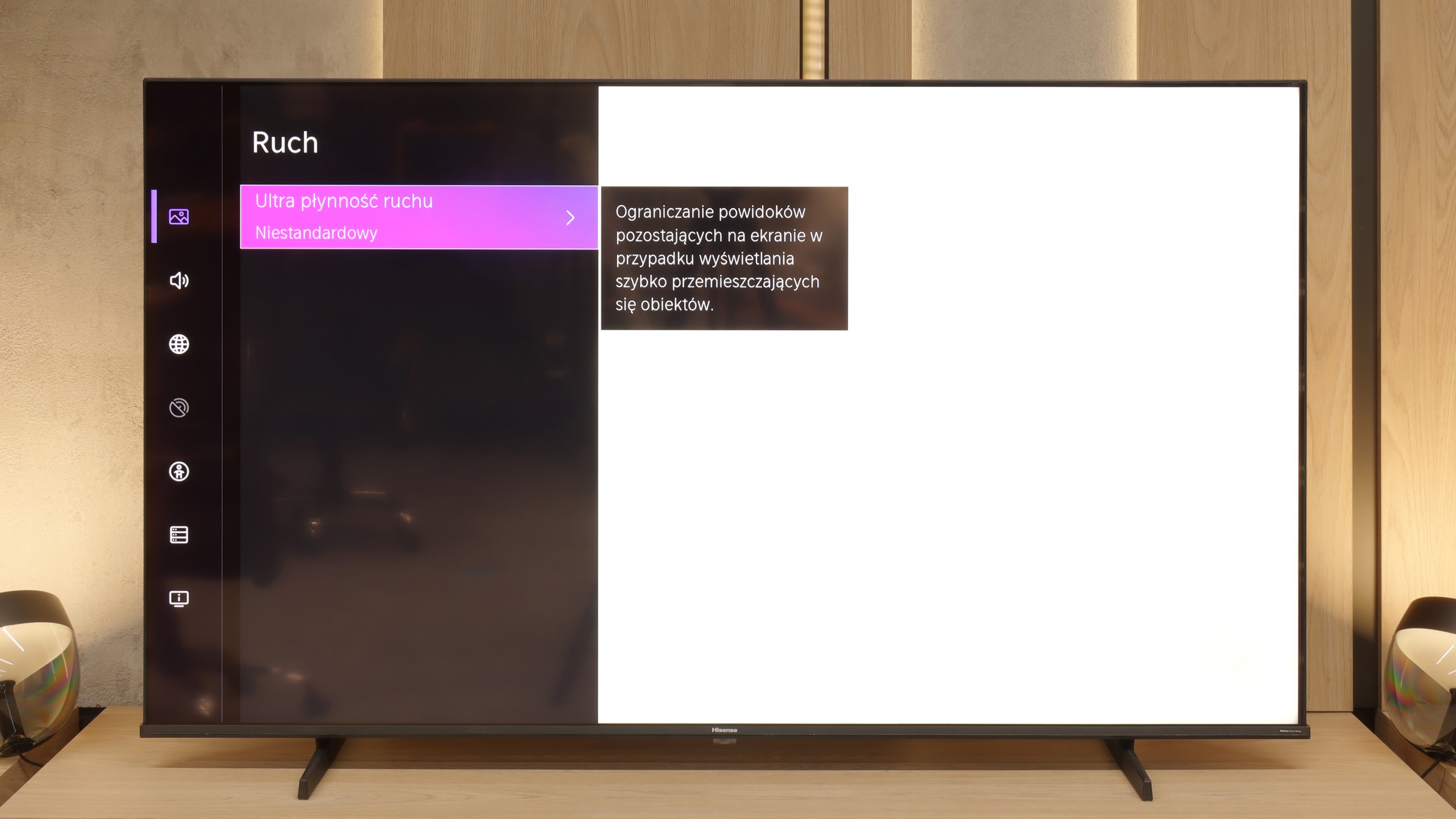
Blur (native resolution, maximum refresh rate):




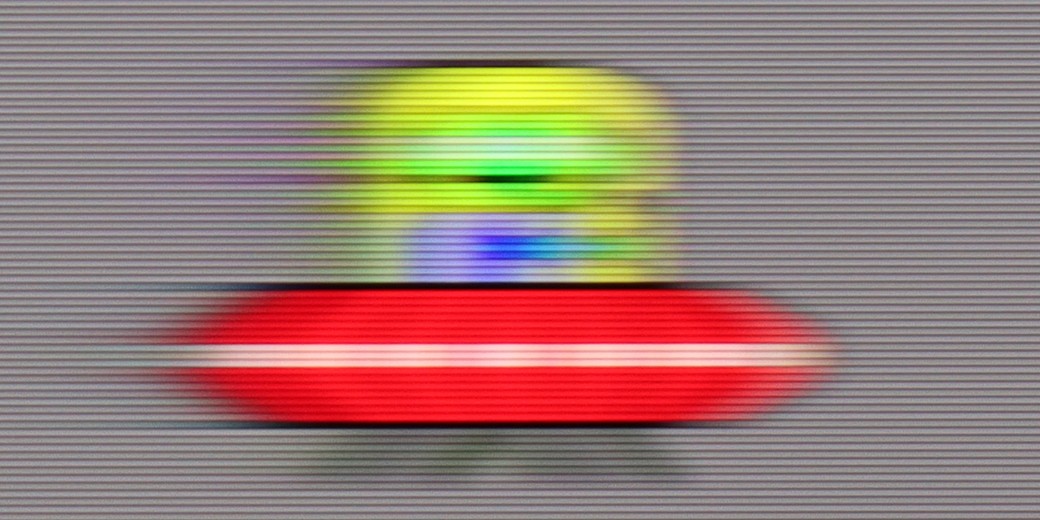
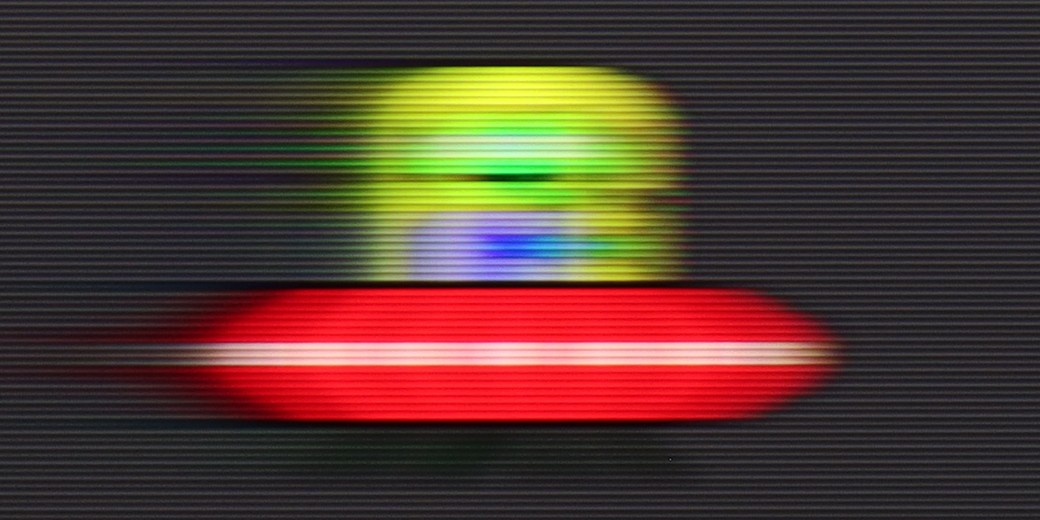
Smużenie ():
Smużenie (1080p@120Hz):


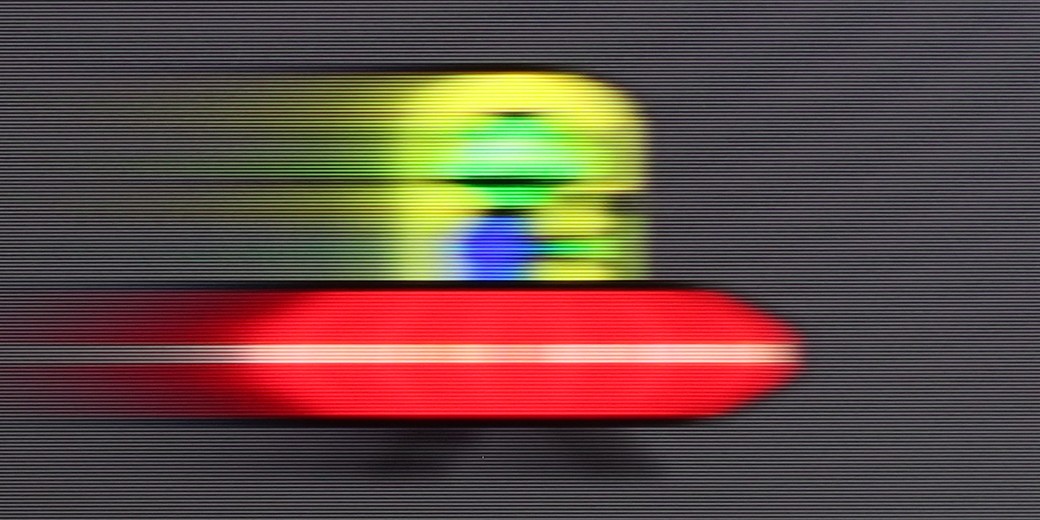
Samsung QN85D TV is equipped with a 120 Hz refresh rate panel, which should satisfy both gamers and sports enthusiasts by offering a smooth and dynamic image. There are options to enhance fluidity, such as the blur and judder reduction feature, which allows precise motion fluidity adjustments on a 10-point scale. The blur reduction increases the sharpness of fast-moving objects, making action scenes more readable, while judder reduction smooths out motion, eliminating the “judder” effect. Ghosting is generally well controlled, though minor imperfections can be visible in more demanding scenes, especially when an object moves against a dark background. Additionally, the TV offers a BFI (Black Frame Insertion) feature at a 60 Hz refresh rate, which can significantly improve motion fluidity experience, although at the cost of image flicker, which might be bothersome for some users.
Hisense E7Q / E79Q is a television with a 60 Hz screen, so sports fans in 4K may feel a slight disappointment – you simply won’t see such smooth images here as in more expensive models with higher refresh rates. Fortunately, when it comes to movies, the situation is much better. Cinematic materials recorded at 24 frames per second can be displayed here using a motion smoothing feature, allowing the user to adjust the picture to their own preferences – more cinematic with visible frames or smoother, in a theatrical style.
Console compatibility and gaming features
9.5/10
6.3/10
- ALLM
- VRR
- VRR range48 - 120Hz48 - 60Hz
- Dolby Vision Game Mode
- Correct implementation of HGIG
- 1080p@120Hz
- 1440p@120Hz
- 4K@120Hz
- Game bar

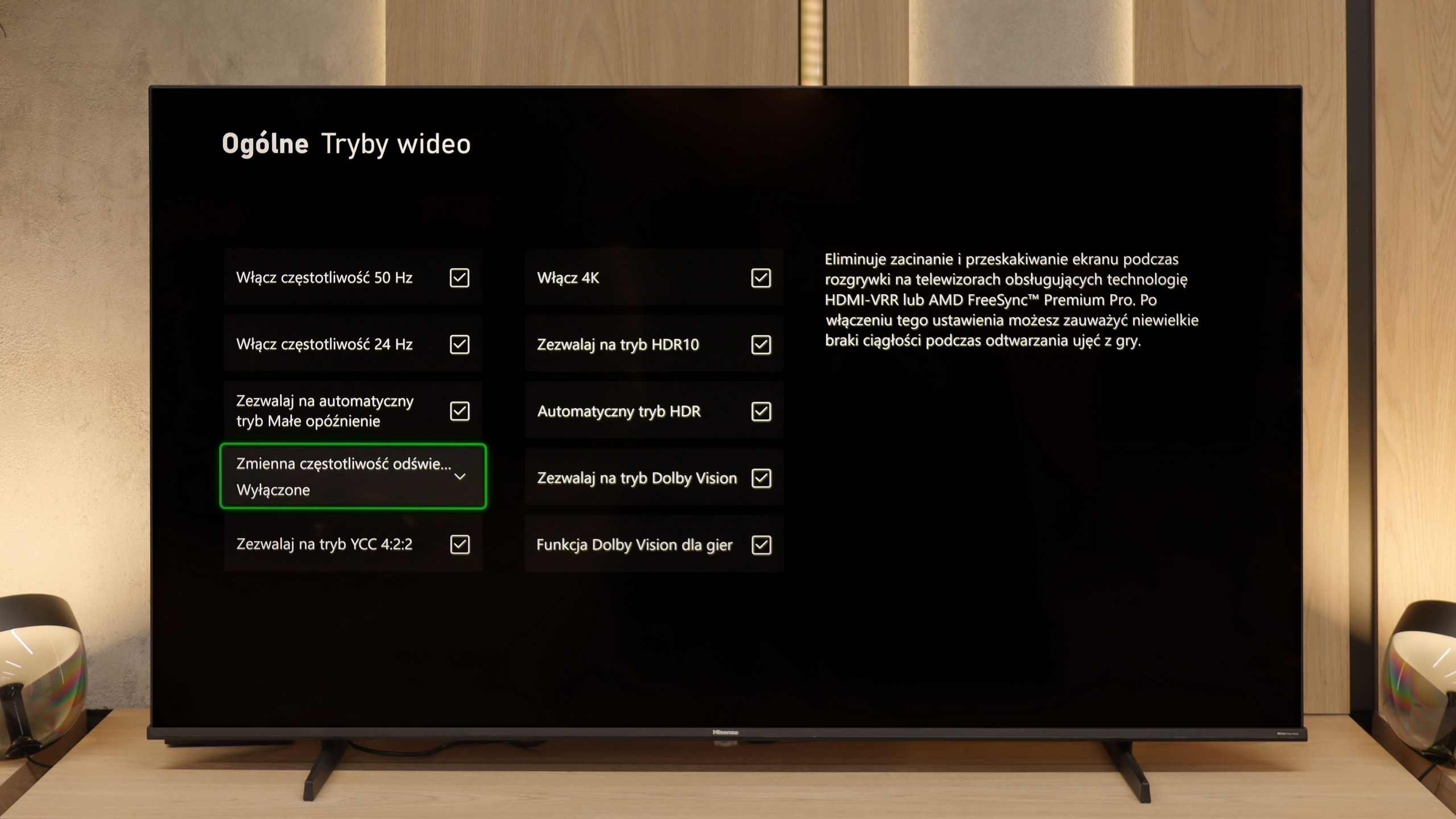

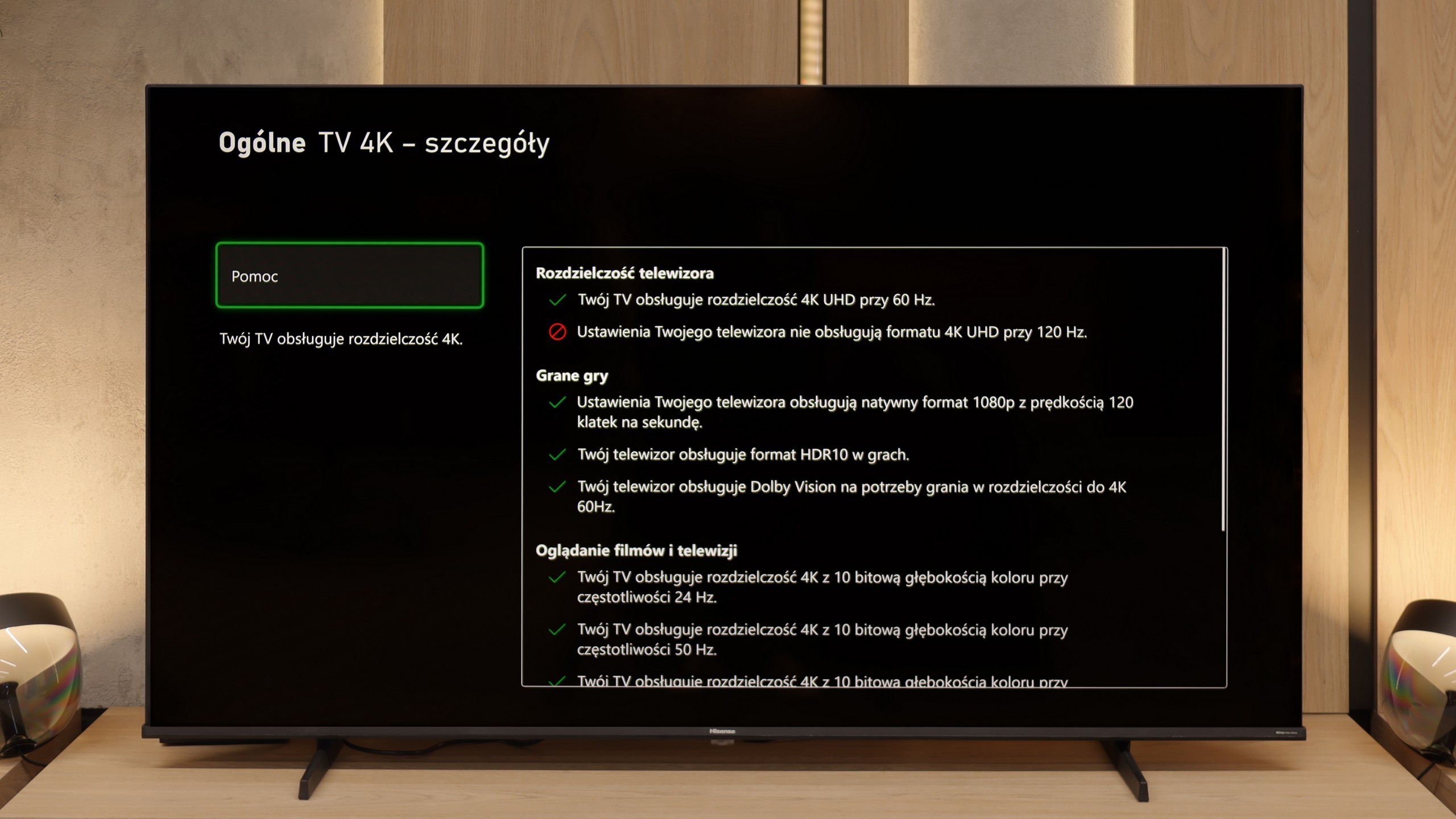

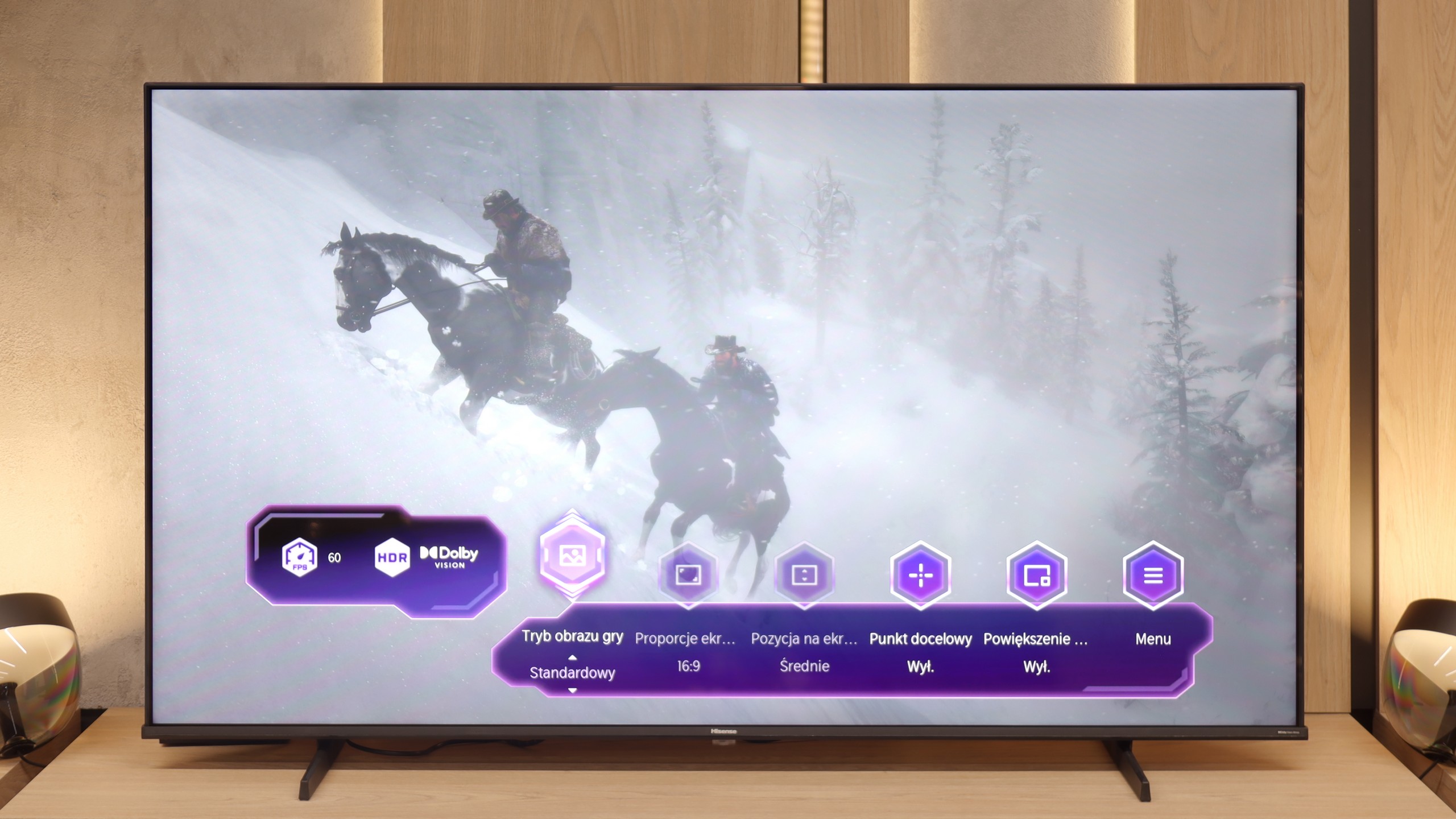

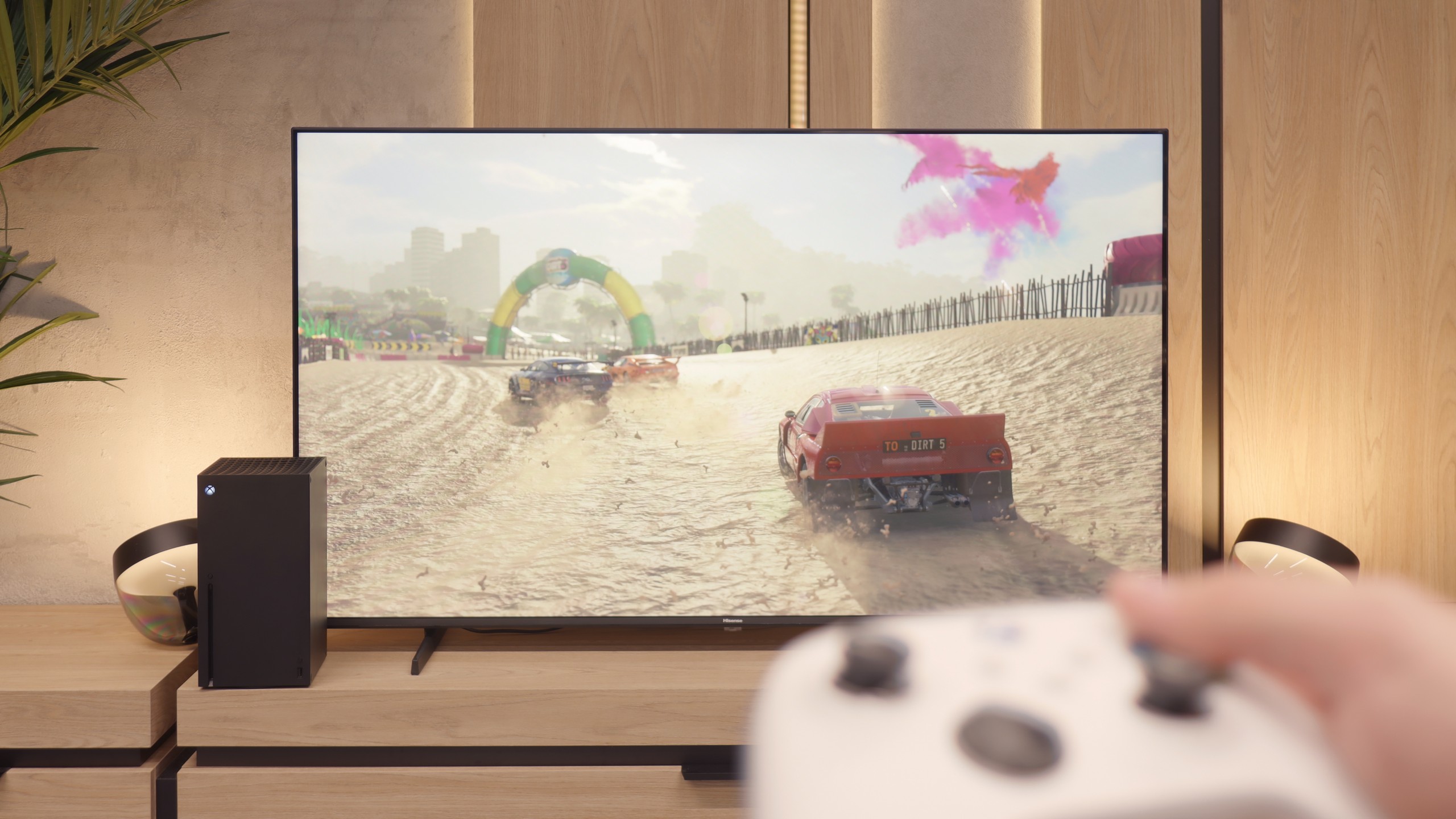
The Samsung QN85D television is an excellent choice for gamers, offering a wide range of features that enhance the gaming experience and make it even more exciting. With a 120 Hz refresh rate panel, the image is incredibly smooth, which is crucial during dynamic scenes in action games. The television also boasts low input lag, allowing for nearly instant reactions to player commands, which translates into better control over characters and events on the screen.
In addition, the QN85D Samsung supports VRR (Variable Refresh Rate) and ALLM (Auto Low Latency Mode) technologies, which optimise image smoothness and reduce delays by automatically adjusting the television to the needs of gamers. Moreover, the Xbox app allows for cloud gaming without the need for a console, which is a big plus for those who want to enjoy their favourite titles without additional hardware – a feature that sets Samsung televisions apart.
The Auto Motion Plus Game feature is another aspect worth highlighting. This motion smoothing technology creates the illusion of more frames per second – as a result, games at 30 fps appear smoother, resembling gameplay at 45 fps, while games at 60 Hz come closer to 90 Hz. Most importantly, this feature does not introduce significant lag, ensuring that gaming comfort is not compromised. This allows gamers to enjoy a smoother image without compromising responsiveness.
Hisense E7Q / E79Q is a really good TV for gamers, even though it doesn’t support 4K signal at 120 Hz. However, the manufacturer has included a set of features that until recently could only be found in more expensive models. There's ALLM, which is auto-switching to low latency mode, allowing the TV to activate game mode with very low input lag automatically. We also have VRR, working up to 60 Hz – while this may not look impressive on paper, in practice it is fully sufficient, as most console games don’t exceed this limit anyway. All these settings can be quickly found in the Game Bar panel, a convenient menu created specifically for gamers. From this level, you can change picture modes, turn on a frame counter, or even… an on-screen crosshair – in the Vidaa system amusingly called a “target point,” which is the result of a clumsy translation from the Chinese manufacturer.
Special praise should go to the ability to play in 1080p at 120 Hz, which significantly improves the fluidity and responsiveness of the image. This means that if someone wants to play a few titles at a higher refresh rate, they can simply lower the resolution and enjoy much smoother motion. Despite the lack of 4K@120Hz, the Hisense E7Q / E79Q really performs well as a gaming TV – especially for those who aren’t looking for perfection but a solid and fast screen for everyday gaming.
Input lag
9.9/10
10/10
SDR
HDR
Dolby Vision
Samsung QN85D impresses when it comes to input lag value. The television achieves outstanding results – below 15 ms for 60 Hz content and around 10 ms for 120 Hz content. This allows gamers to enjoy instantaneous responses to their actions, especially in dynamic games where every millisecond counts. Such low input lag makes gameplay more responsive and natural, enhancing the overall experience while playing.
In gaming, the easiest thing to notice is how fast (or slow) the TV is – and the Hisense E7Q / E79Q passes this test without a hitch. After just a few minutes of playing, you can feel that the response to the controller's movements is instantaneous, without that characteristic lag that can ruin even the best match in FIFA or a crucial exchange in a fighting game. In game mode, the E7Q / E79Q operates with a delay of under 15 ms, meaning there’s practically no gap between pressing a button and the reaction on the screen. This is a level that pricier models would be proud of. And it’s for this responsiveness – perhaps more than the picture or extras – that this TV truly deserves praise.
Compatibility with PC
7.6/10
3/10

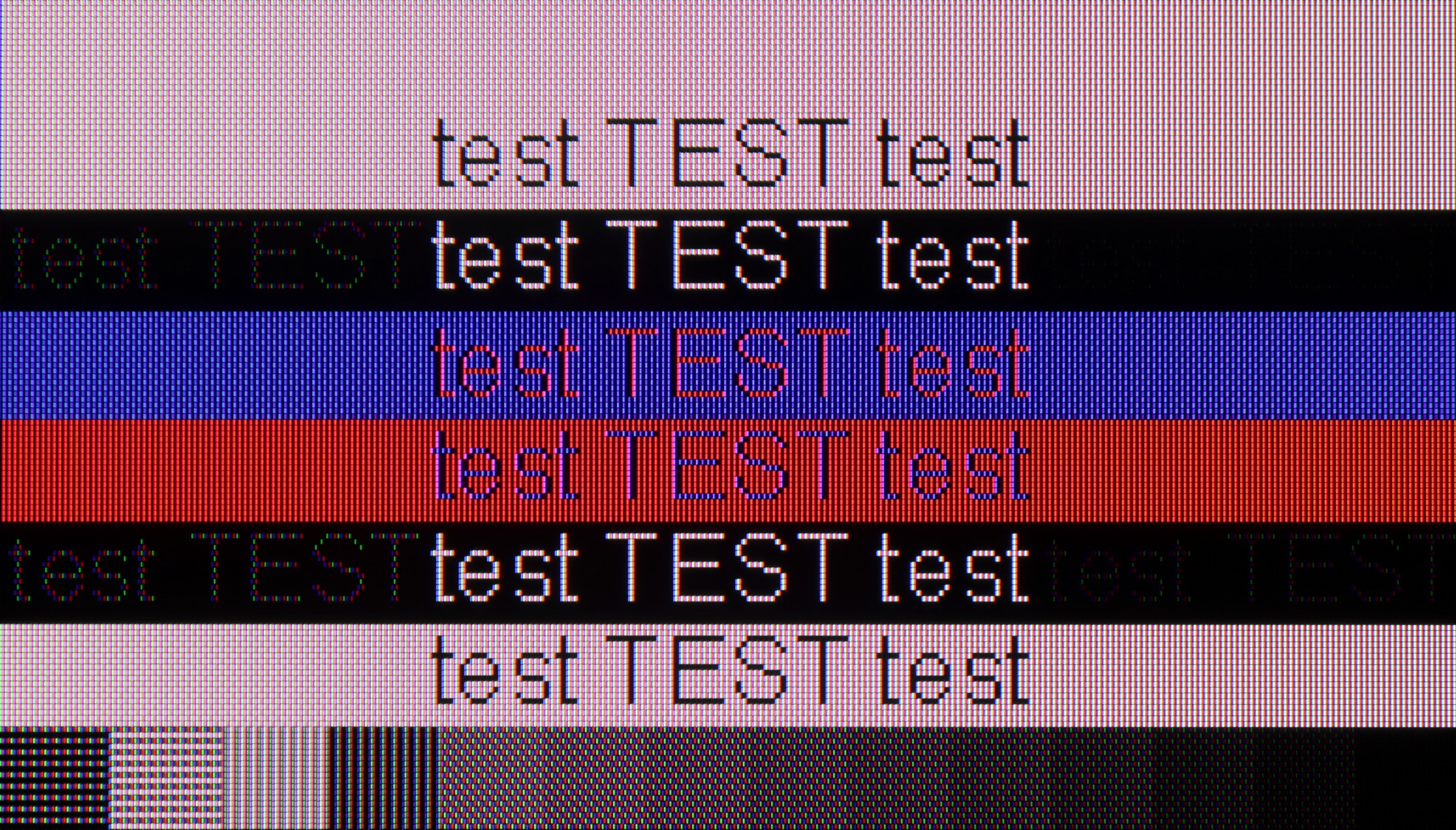
Samsung QN85D could be a good option as a computer monitor. Thanks to support for chroma 4:4:4 (available only in "Game" mode), text on the screen is clear and easy to read, which is crucial for those working with word documents or spreadsheets. A major advantage of this model is its exceptionally low input lag in "PC" mode – just 9 ms, which is really impressive and provides high fluidity and responsiveness, making it suitable for both work and gaming. However, there are some drawbacks. When displaying fonts on a dark background, an issue arises – when zooming in on an image, it can be seen that the horizontal lines are darker than the vertical ones. This is due to the fact that the sub-pixels in those areas do not light up fully, which may be a result of oversight on the manufacturer's part in optimising the algorithm responsible for displaying thin lines. As a result, the quality of text on a dark background is not ideal. Despite this, the television still remains a very good choice as a PC monitor, especially considering the low input lag and support for chroma 4:4:4.
In terms of collaboration with the PC, the Hisense E7Q / E79Q unfortunately does not impress. Yes, the television supports full 4:4:4 chroma sampling, so text and fonts are fairly readable, but that's where the list of advantages pretty much ends. The screen has a significant issue with dithering, which in practice looks very unpleasant – as if the surface of the image subtly shimmered with colours. This is best seen with dark letters on a grey background – instead of neutral shades of the font, there are delicate flashes of blue, green, and red, resembling a rainbow effect. After extended use with the computer, this can strain the eyes and diminish comfort. On the plus side, it’s worth noting the presence of frame syncing and the ability to operate at 120 Hz at a lower resolution, which may be a small consolation for gamers. However, as a typical PC monitor, the E7Q / E79Q performs rather mediocrely.
Viewing angles
2.9/10
3.2/10
The Samsung QN85D television, due to its VA panel, has quite poor viewing angles. When viewed from the side, colours lose their intensity, and the image becomes noticeably less contrasted. This is a typical drawback of VA panels, which offer significantly worse picture quality when viewed from wider angles. However, directly in front of the television, the situation looks much better – the VA panel then provides deep blacks and better contrast, which is a big plus if the television is mainly watched while sitting directly in front of the screen.
Hisense E7Q / E79Q has typical VA panel weak viewing angles. Directly in front, the image looks very good – the blacks are deep, and the contrast is high. However, just sitting slightly off to the side, the situation quickly changes. At around a 45-degree angle, brightness drops by about 73%, and the colours noticeably lose their saturation. This is a typical compromise we have to pay for choosing a TV with this type of panel instead of an IPS panel. There, the viewing angles are much better, but the blacks are significantly worse.
TV efficiency during daytime
7.3/10
5.2/10

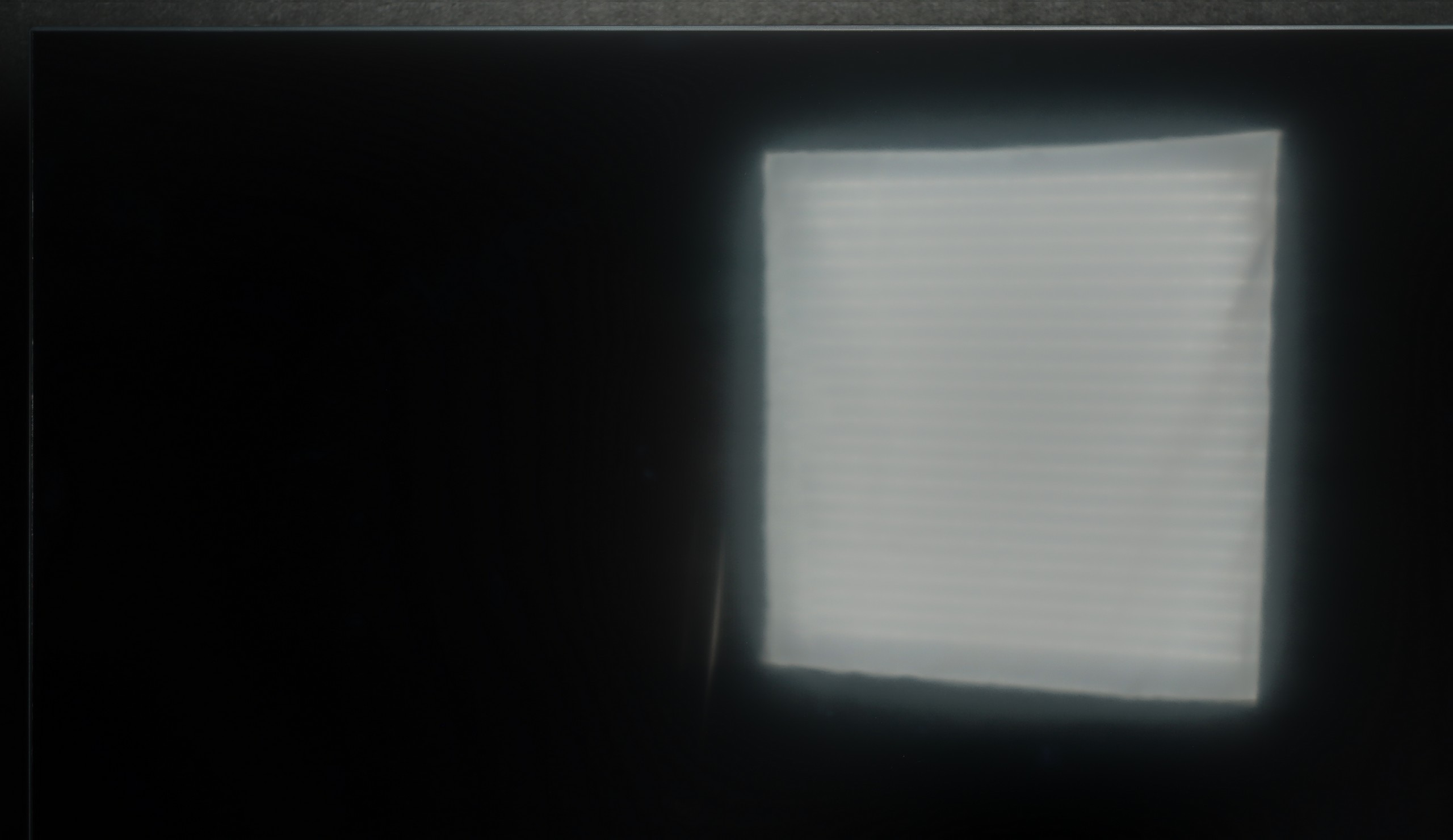

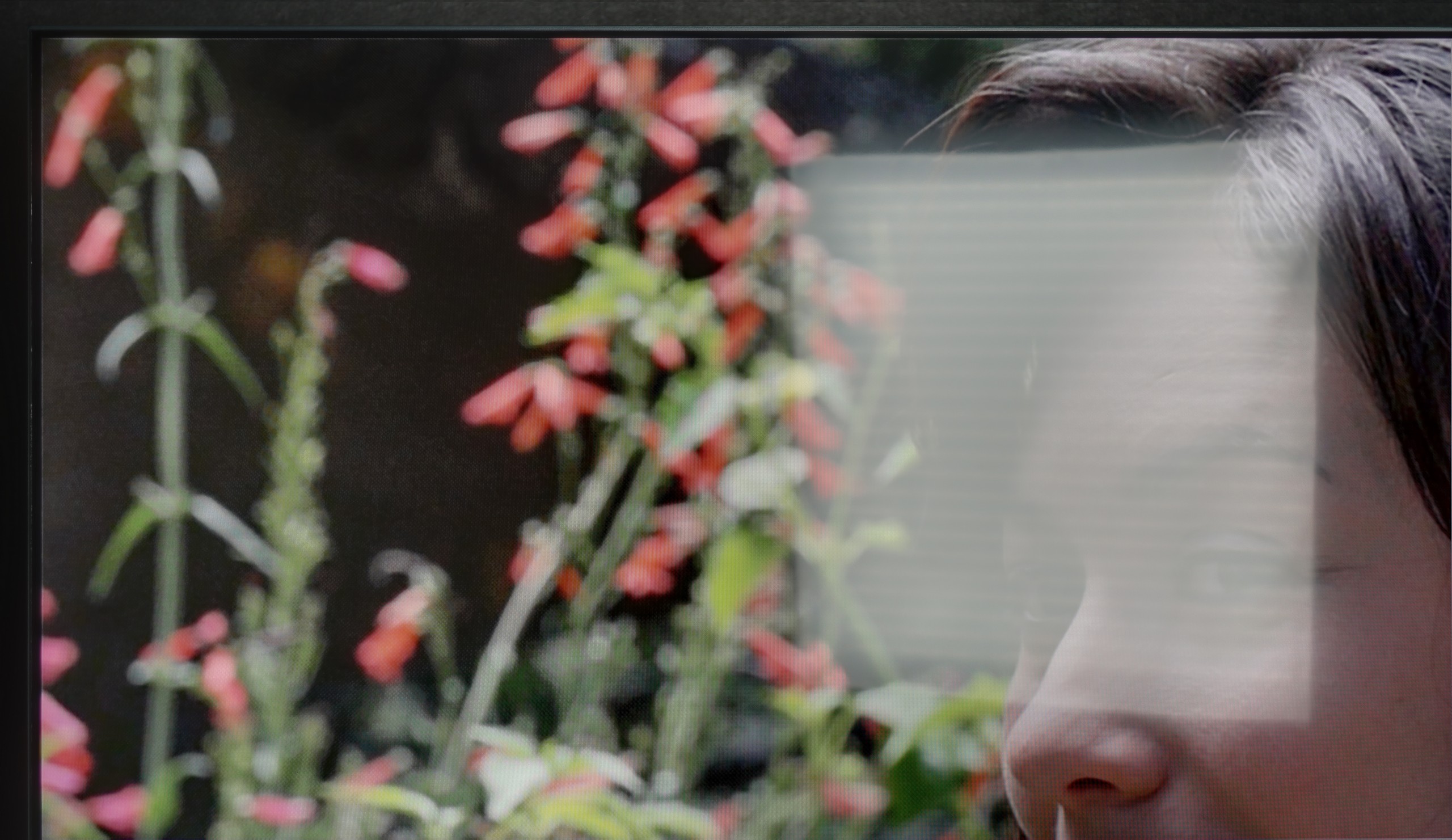
Matrix brightness
Average luminance SDR
Hisense E7Q / E79Q: 371 cd/m2
Samsung Neo QLED QN85D / QNX1D: 825 cd/m2
Samsung QN85D TV performs very well in bright daylight conditions. Although the satin panel moderately suppresses reflections, the brightness level of 825 cd/m² is truly impressive. Even in direct sunlight, the television handles itself very well, providing a clear and sharp image, and the largest external light sources do not pose a significant problem. This makes this model a good option for rooms with a lot of natural light.
The Hisense E7Q / E79Q performs best in moderately bright living rooms. Its brightness ranges from 350–380 nits, so in typical home conditions, the picture looks good, but in very sunny rooms, it starts to lose clarity. It’s simply not a screen for interiors with large windows or strong daylight. On the plus side, it’s worth mentioning the satin finish of the panel, which effectively reduces reflections – both from lamps and windows. As a result, even when the room isn't dim, the picture remains quite readable.
Details about the matrix
Subpixel Structure:

Panel uniformity and thermal imaging:


Samsung Neo QLED QN85D / QNX1D
Hisense E7Q / E79Q
TV features
7.4/10
8.7/10
- HDMI inputs0 x HDMI 2.0, 4 x HDMI 2.1 48Gbps3 x HDMI 2.0, 0 x HDMI 2.1
- Other inputsComponent (YPbPr)
- OutputsToslink (Optical audio), eARC (HDMI), ARC (HDMI)Toslink (Optical audio), eARC (HDMI), ARC (HDMI), Mini-Jack (Headphones)
- Network InterfacesWi-Fi 2.4GHz, Wi-Fi 5GHz, Ethernet (LAN) 100MbpsWi-Fi 2.4GHz, Wi-Fi 5GHz, Ethernet (LAN) 100Mbps
- TV receptionDVB-T, DVB-T2, DVB-S, DVB-S2, DVB-CDVB-T, DVB-T2, DVB-S, DVB-S2, DVB-C
Classic features:
- Recording to USB (terrestrial TV)
- Recording programming
- Picture in Picture (PiP)
- RF remote control (no need to aim at the screen)
- Backlit remote control
- Teletext
- Audio only mode
- Bluetooth headphones support
- Simultaneous Bluetooth headphones & TV audio
Smart features:
- AirPlay
- Screen mirroring (Windows Miracast)
- Voice search
- Voice search in native language
- Ability to connect a keyboard and mouse


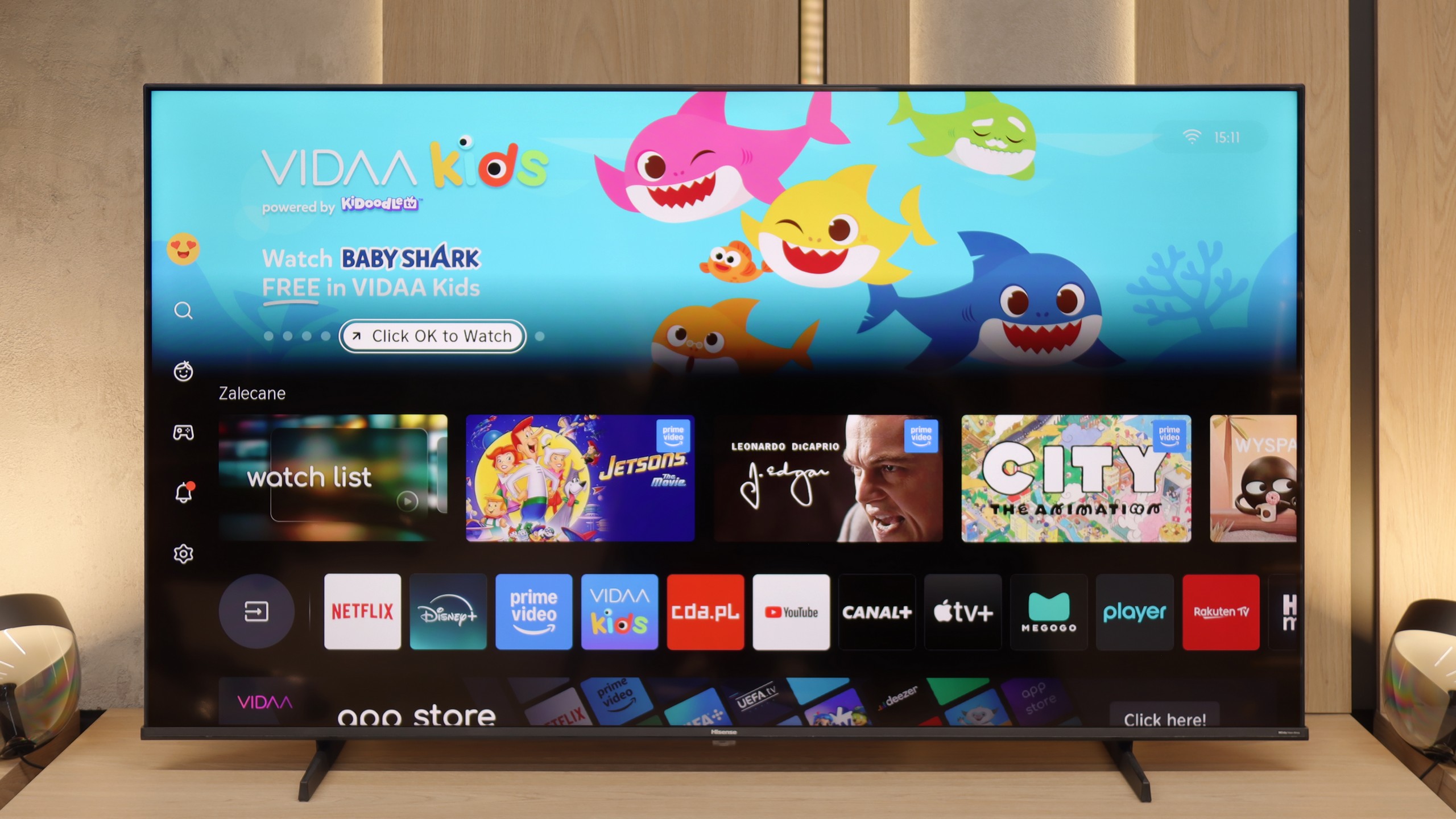
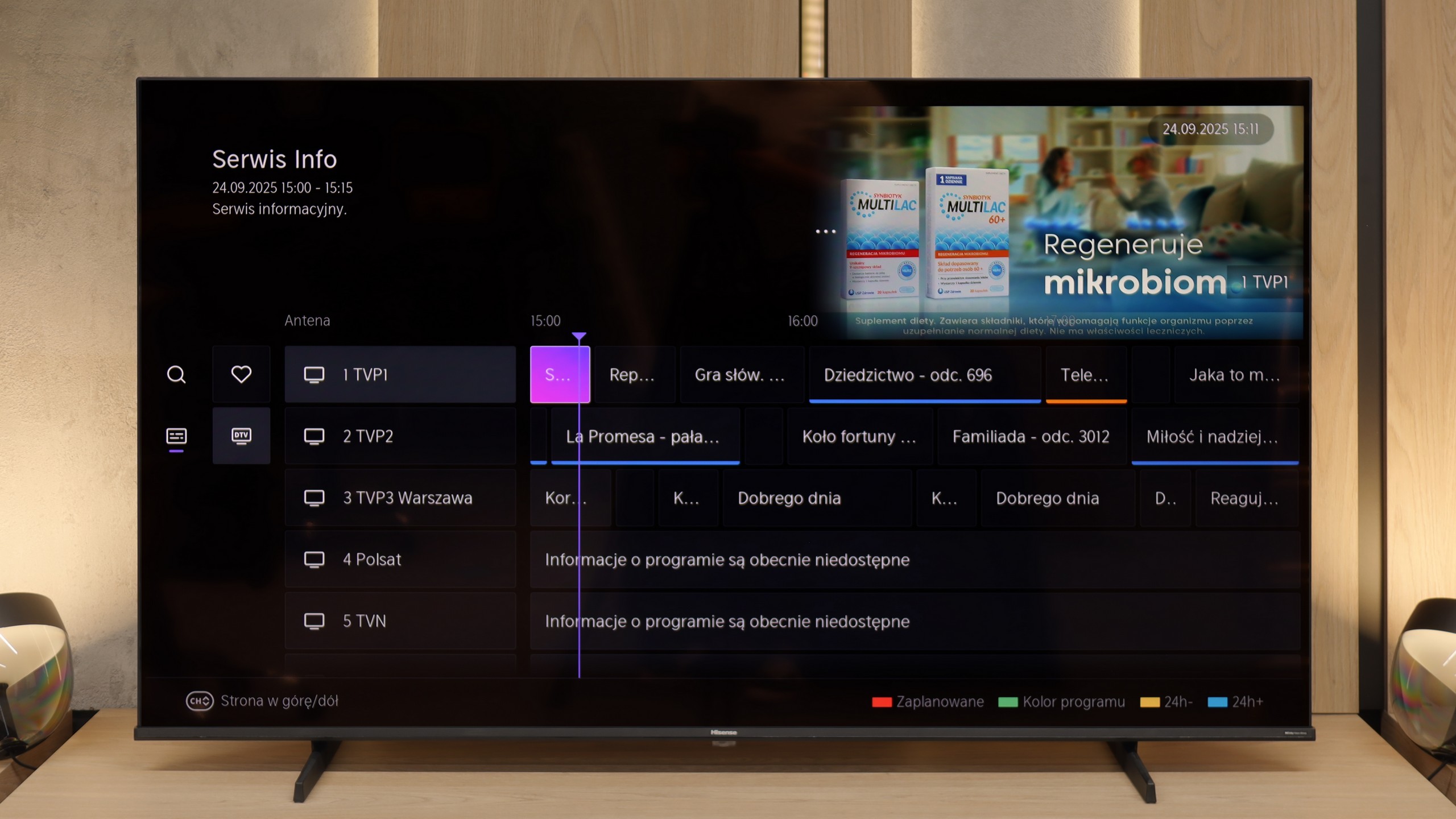
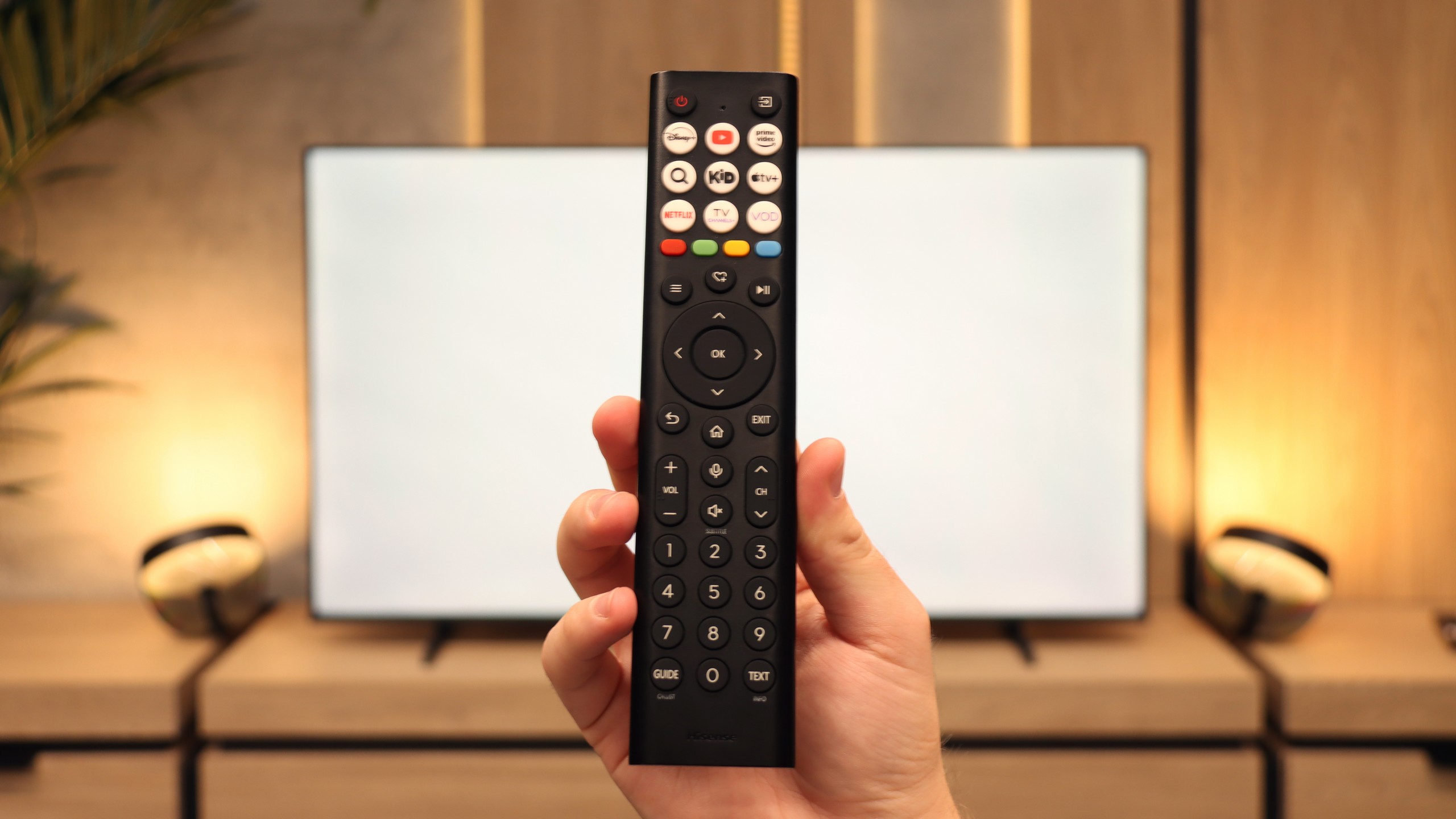
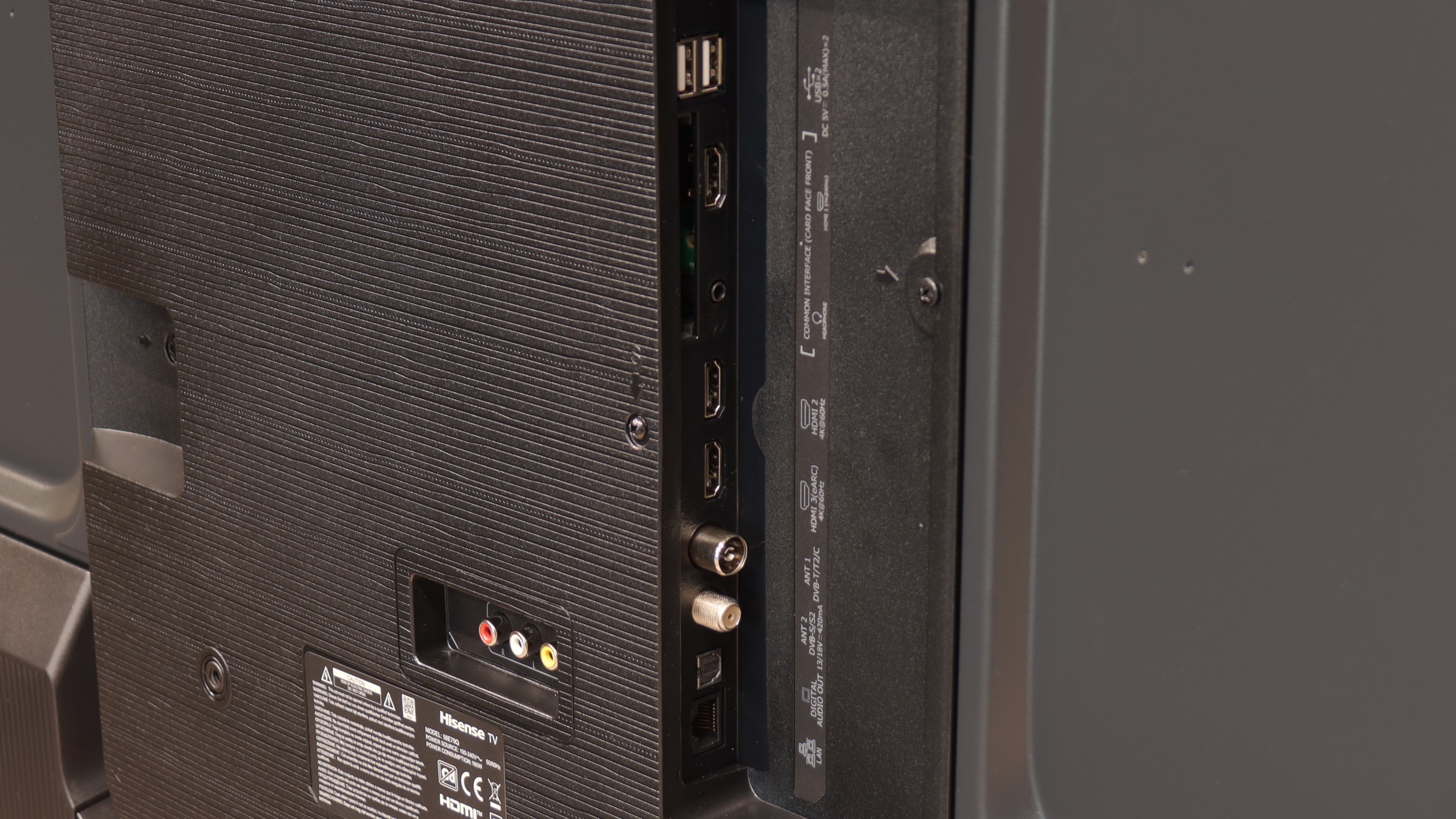
Samsung QN85D offers a wide range of smart features, thanks to the Tizen platform. Users have access to applications and features such as SmartThings, allowing management not only of Samsung devices but also equipment from other brands, creating a complete smart home ecosystem. The TV also supports AirPlay, enabling convenient content streaming from Apple devices directly to the screen, enhancing flexibility and comfort in everyday use.
Model QN85D also stands out in terms of unique features. The TV features Daily+, offering a variety of daily content such as fitness exercises or workspace. Additionally, the attractive appearance of the TV, while not as slim as last year's models, still presents well. The central stand provides solid support and adds character to the device, giving the TV a more elegant look.
In terms of user features, the TV is equipped with a remote that controls set-top boxes, such as Canal+, allowing easy control of most home equipment with a single device. The TV also has a PiP (Picture-in-Picture) function, enabling simultaneous viewing of two image sources. Unfortunately, one of the drawbacks that can be noticed is the lack of a recording function, which may be a significant downside for some users.
SmartTV Features: Vidaa
When it comes to Smart TV features, the Hisense E7Q / E79Q operates on the VIDAA system, which has been developed by the Chinese manufacturer for several years. It’s clear that the software is maturing – it includes AirPlay, Screen Mirroring, and voice search in multiple languages, including Polish. Unfortunately, in our unit, it worked quite slowly, which surprised us a bit, as in other Hisense models, this system responded much faster. The limited app library is also a downside. Of course, the most important ones are here – Netflix, Disney+ and YouTube – but it’s worth checking before purchase to see if you can find everything you use daily.
Traditional Features
In terms of traditional television features, the E7Q performs significantly better. It offers practically everything you could expect from a classic television: recording from built-in tuners to USB, a headphone jack output, and even a component input for older audio equipment. Additionally, it fully supports audio via eARC, ensuring that, regardless of the situation, the soundbar will always “perform as required.” The remote is also quite classic, well-designed with a good number of buttons (including numerical ones), which may appeal to those who still watch regular television on the set. 😉
Playing files from USB
9.1/10
8.2/10
Supported photo formats:
Maximum photo resolution:

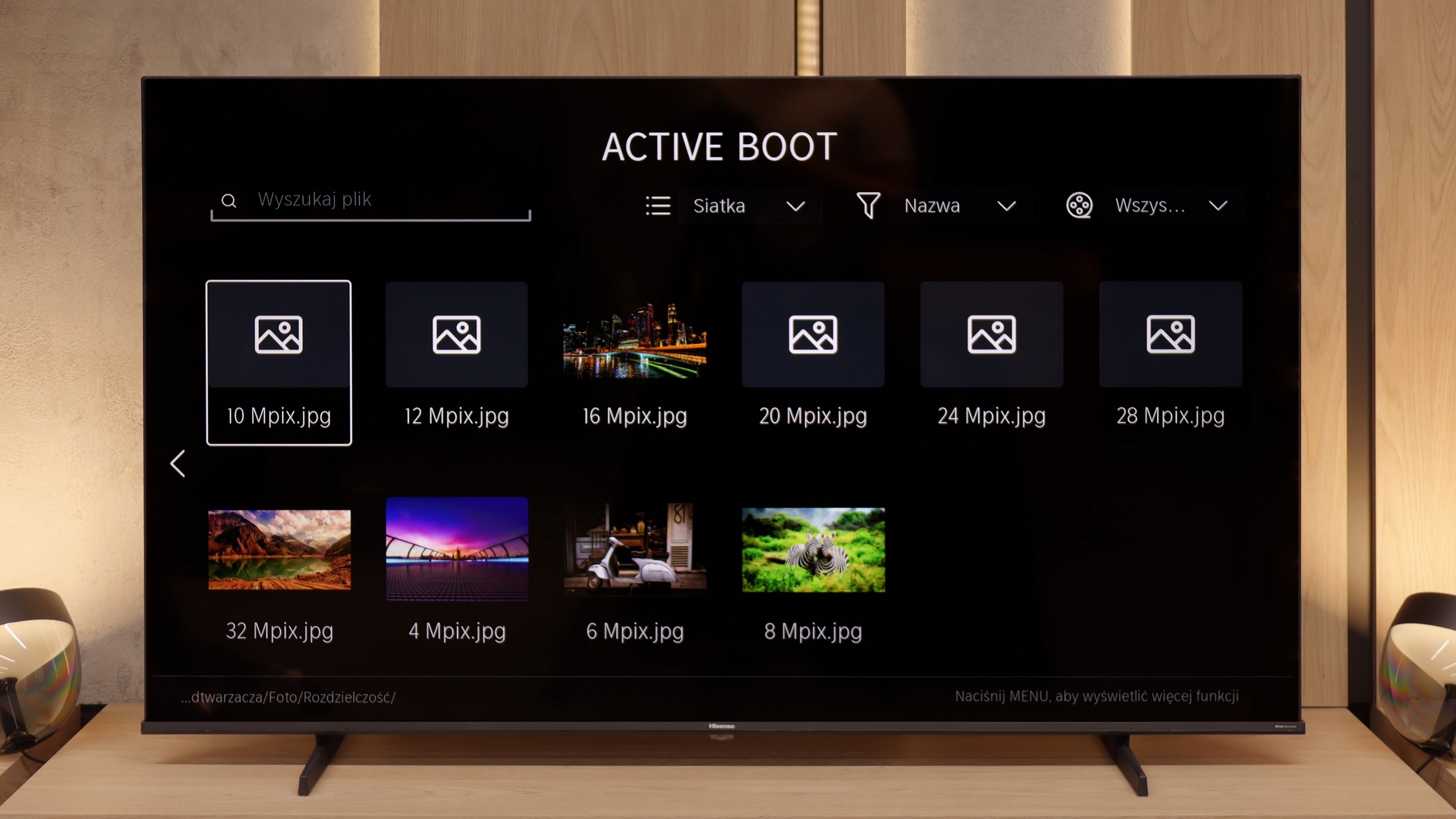
The built-in player in the Samsung QN85D should satisfy most users. It handles popular video and audio formats without much trouble, offering solid support for the most commonly used codecs. However, more demanding users may notice some shortcomings – it is not possible to play photos in the HEIC format, popular in Apple devices, as well as a few other, less common photo formats.
The media player in the Hisense E7Q / E79Q works properly, but it can be temperamental. The biggest issue concerns photo support – the TV only handles selected formats, and some files simply do not open. This is quite surprising because even cheaper models from other manufacturers usually do not have this problem. Videos and music play without major issues, however, one has to keep in mind that the E7Q is not a master of versatility when it comes to files from a USB stick. It is rather a basic player that works – provided we don't try to "surprise" it with something.
Apps
8.7/10
7.7/10














































Sound
7/10
6.3/10
- Maximum volume-83dB
- Dolby Digital Plus 7.1
- Dolby True HD 7.1
- Dolby Atmos in Dolby Digital Plus (JOC)
- Dolby Atmos in Dolby True HD
- DTS:X in DTS-HD MA
- DTS-HD Master Audio
The sound on the Samsung QN85D television is pleasant, with a subtle sense of bass and clarity across the entire volume range. This is thanks to the built-in 2.2 40W speakers. Unfortunately, the lack of support for the DTS audio format may be problematic for users wanting to enjoy a full sound experience. In such cases, it will be necessary to use an external player to get support for this format.
The sound on the Hisense E7Q / E79Q is exactly what you’d expect from a TV in this price range – rather flat, but fairly loud. During measurements, the maximum volume reached around 83 dB, so it’s more than sufficient for daily viewing. Dialogues are easily heard, which somewhat compensates for the lack of distinct bass and depth. There are no revelations here: it's simply a solid minimum that is acceptable. On the plus side, the wide support for audio formats is a bonus. The TV handles Dolby TrueHD, Dolby Atmos, and even the increasingly rare DTS:X. This is a nice touch because at least we can be sure that everything will play as it should, regardless of the source – especially when we connect it to an external audio source like a soundbar.
Acoustic Measurements
No acoustic data
83dBC (Max)
75dBC
